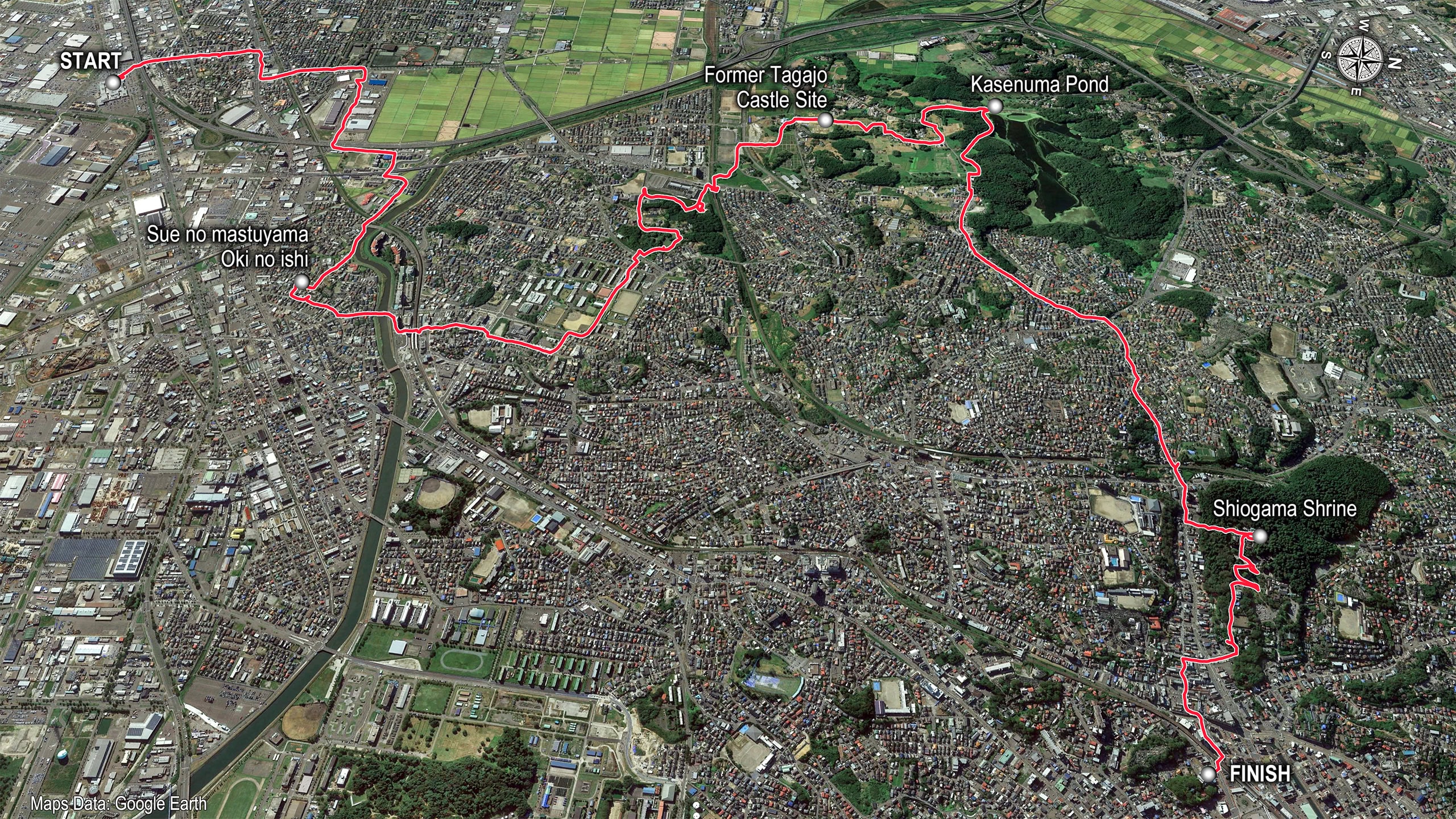

Our last night’s accommodation, Dormy Inn Express Sendai Port, had an amazingly large hot spring, so we regained our energy. As the estimated walking distance for today was about 15 km, which was relatively shorter than the past few days, we enjoyed a slow morning and had a nice breakfast buffet at the hotel dining hall.
At check-out, we gave the front staff two new supply boxes and arranged to ship them to their next destination. To determine where to send them, we have already booked accommodations for the next seven days, and the boxes will be waiting for us at the last one.
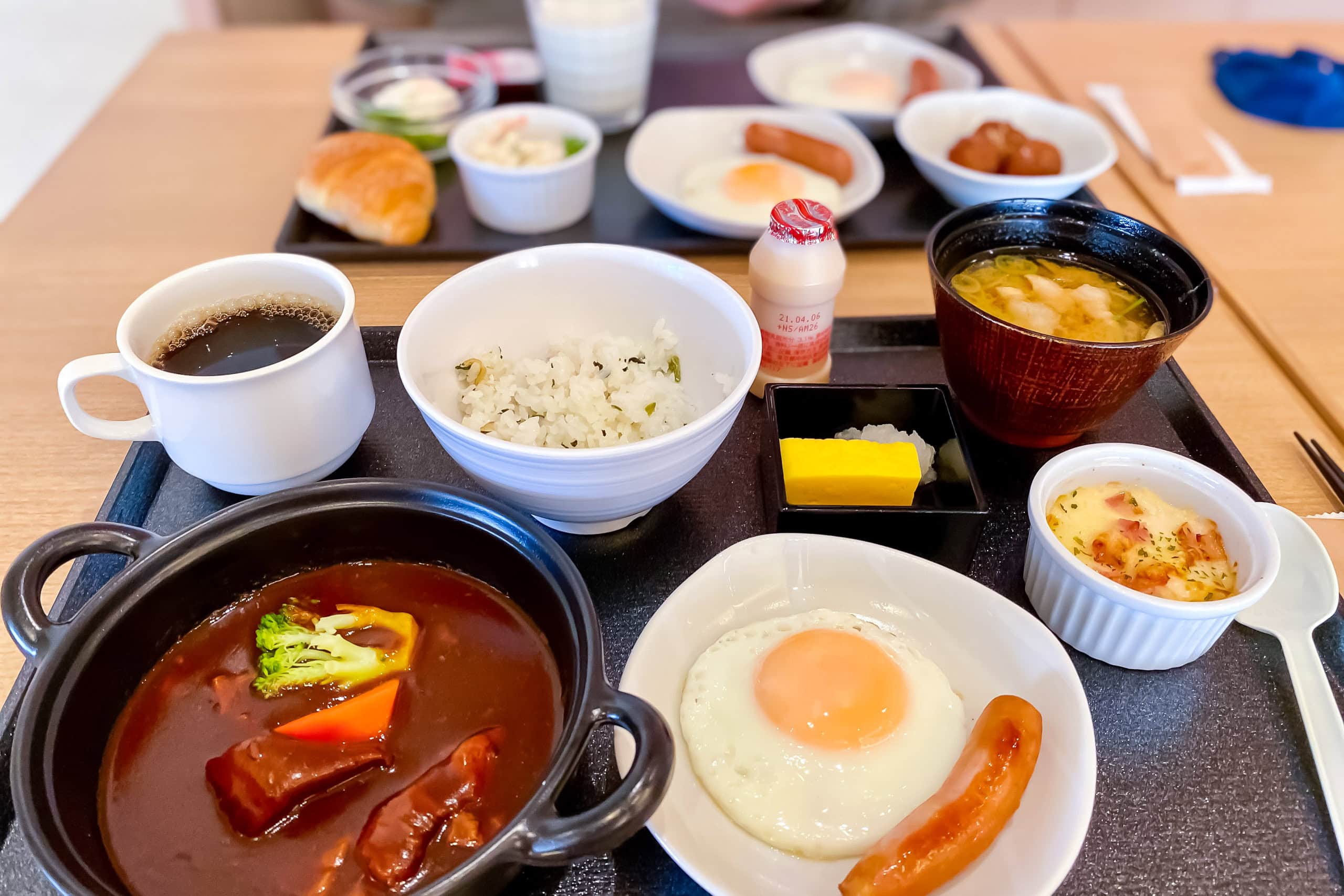

It had been six days since we started from the south terminus of the MCT in Soma. We have found more advantages of taking the northbound route (NOBO), which is walking along the Tohoku’s Pacific Ocean side coastline towards the north terminus in Hachinohe, Aomori,
One of them is that various shopping options are available along the route during this early stage.
After almost a week of walking on many paved roads and some mountain trails, we have learned what we actually need to carry with us and what we don’t. For the last two days, we have set daily goals in big-town areas to quickly shop for additional supplies and reorganize our gear.
The only hiking gear store on the MCT route
There was a big factory outlet mall right behind our hotel. Right after we left the hotel, we dropped by the mall for the only store of Mont-bell (the biggest hiking gear brand in Japan known for its high quality and affordable pricing) on the entire MCT route and bought a pair of summer gloves and a hat strap.
I must emphasize that there are no more decent hiking gear stores up north from here to the north terminus of the MCT along the route. Though bug sprays, sunscreens and canister fuel for backpacking stoves can be purchased at drug stores and “home-center” stores, finding stores for proper backpacks, hiking shoes, trekking poles and such will be nearly impossible along the MCT route.

The first part of our walk today was a small industrial area. The street through warehouses eventually led us to some busy car roads, and then, finally, we found ourselves in a quieter residential area.
It was then that we realized our very short time in Sendai city part of the MCT route had already gone a while ago. Now, hello, the city of Tagajo 多賀城市.
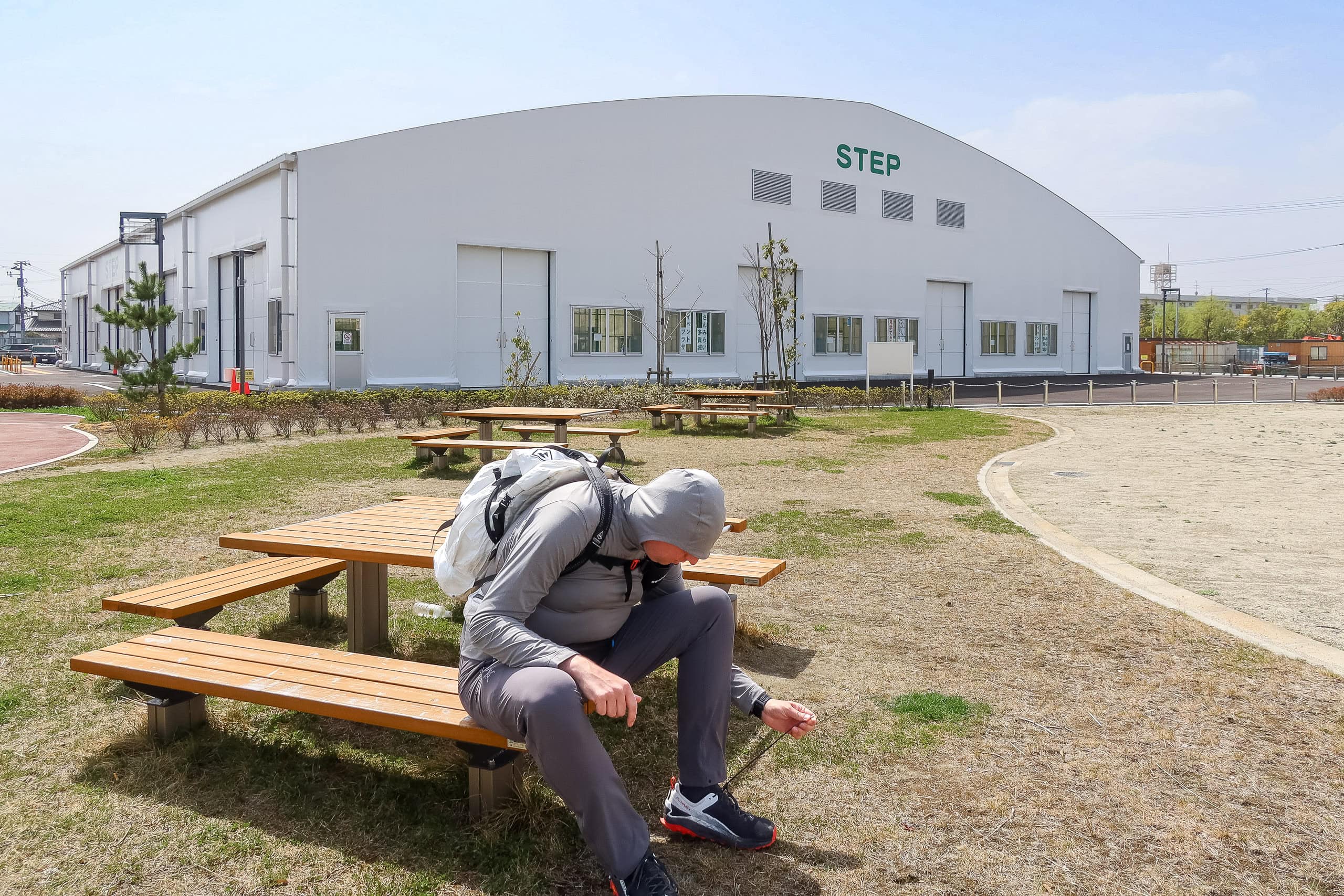

Tagajo, The historic city of 1300 years
While the MCT route ran through the quiet neighborhood, it sometimes took weird detours, making a zig-zag line along narrow paths between houses. In our past posts, I questioned that a lot of these detours the MCT route draws didn’t really make sense because we just could not see a reason why the route had to go through those particular streets. But today, we saw clearly what the zig-zag route wanted to show us.
Tagajo is a very old city with more than 1300 years of history. In my high school history textbook, though it was SO long time ago, Tagajo and its historical importance in the chapter for 8th century ancient Japan.
This relatively small city is full of historic sites, and the MCT’s zig-zag route line did a very good job connecting them so we could see them around efficiently.

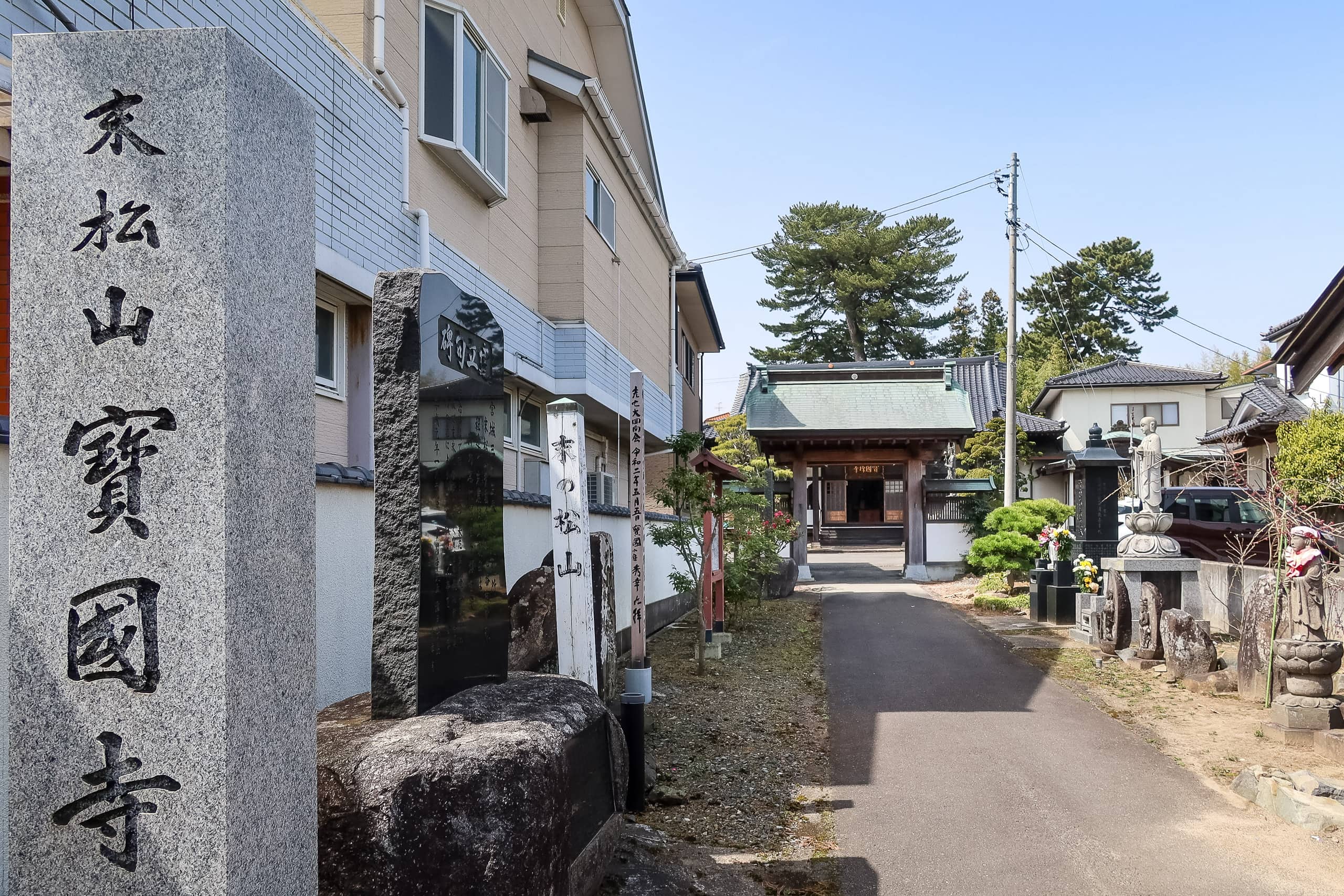
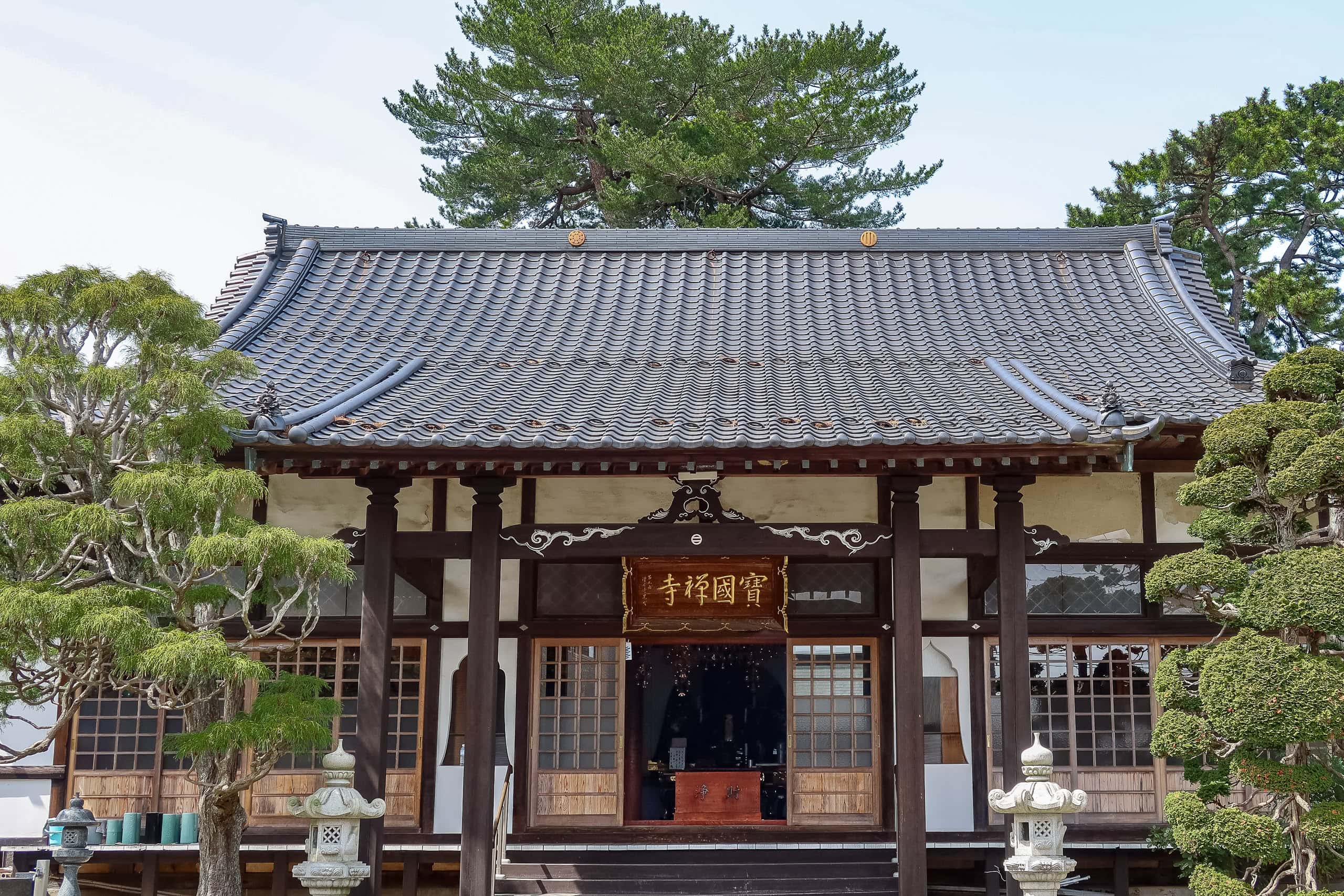
The first historic site was two tall pine trees standing atop a tiny hill behind a temple. This place is called Sue no matsuyama 末の松山 and was historically used as a metaphoric word in composing waka poem 和歌 (thirty-one syllable Japanese poem). Ironically, now it looks like such a tiny hill, but it was once a metaphor for a very high obstacle, impossible for even a wildly high sea wave to swamp.
But of course, Erik looked confused as he had no idea why these ordinary pine trees could be so special until I told him the story behind them. For me, thanks to the high school classic Japanese literature class, it was so interesting to see them firsthand.

Only 60 meters down the street from the two pine trees hill, there was a small pond sitting super randomly in the middle of houses. A big rocky bamp with a couple of small pine trees occupied the half of the pond. An information board showed the name of the pond: Oki no ishi 沖の石 — Here comes my trip down memory lane to the classic Japanese literature class again.
The rocky bump was the important part of the pond. Ancient waka poets (again) used it as a metaphor for something hidden, unknown, or unseen because it was supposed to always be under the sea.

Today, that supposedly hidden rock is exposed in the middle of a residential area, far away from the sea. The Earth’s dynamic land formation must have pushed the rock up over a thousand years. I was unsure if the pond’s water came from a spring or was just a collection of rainwater. Either way, it should not taste salty anymore.
Both the pine tree hill and the rocky bum in the random pond proved that the land of the residential area we were walking through used to be under the sea. That should explain why there are few historic sites right by today’s coastline in this region.
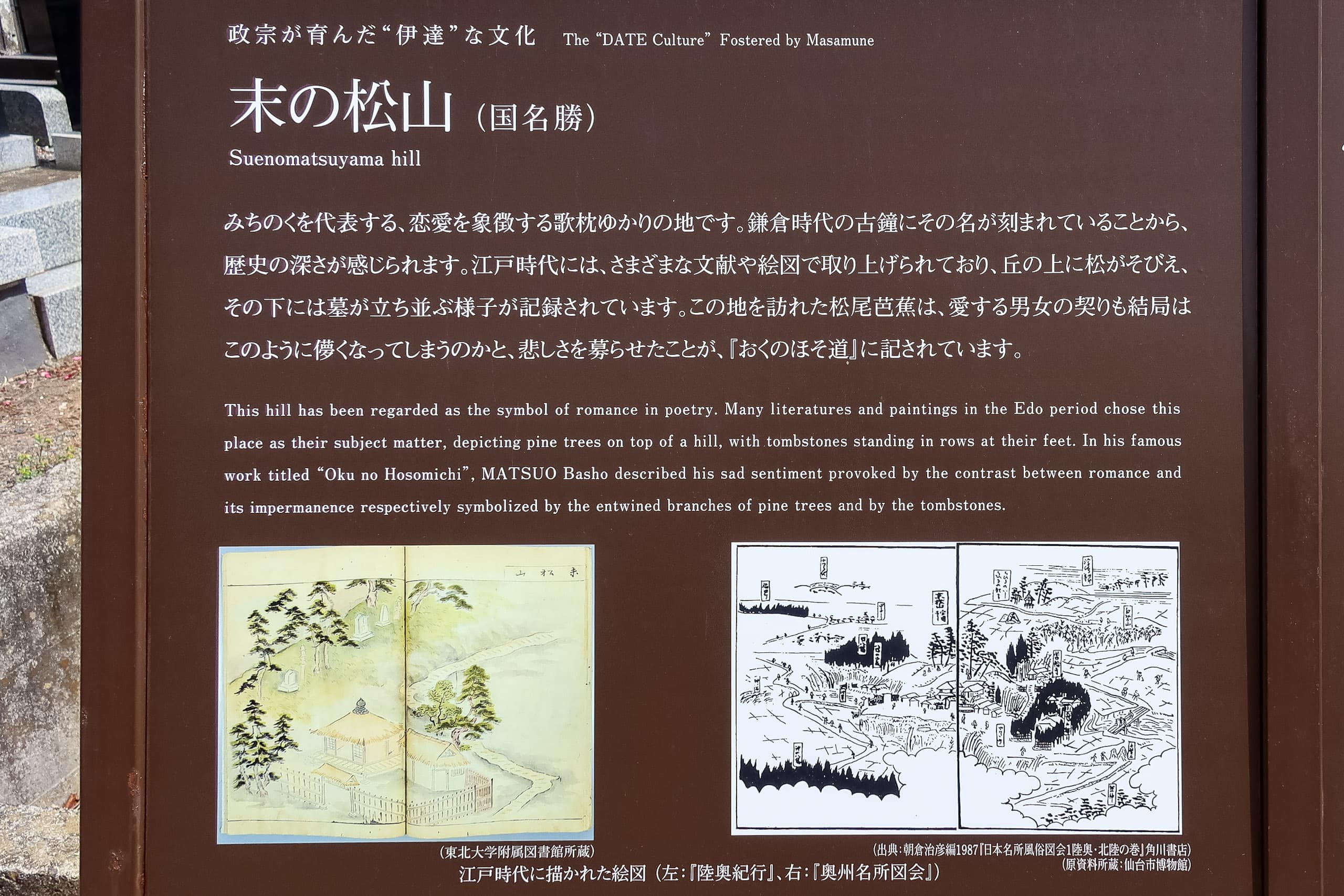
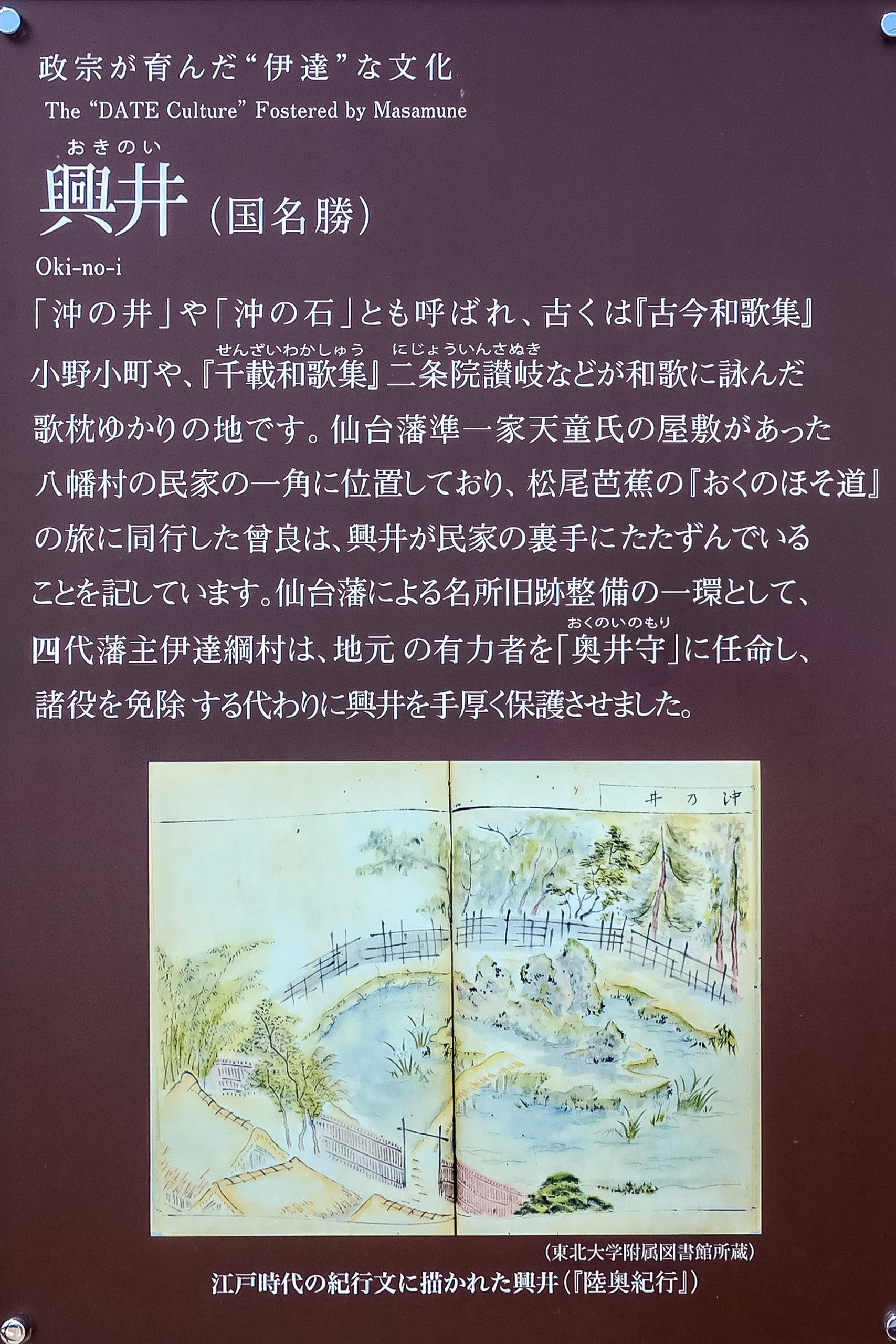


Soon after that, we crossed the Tagajo station and entered the northern part of the city. In ancient times, this side’s ground was already above sea level, so most historic sites were located here.
Cherry Blossom Front 桜前線 for this spring (2021) finally seemed to catch up with us. As we strolled through the city, here and there, most cherry trees looked one-third or half-bloom with various tints of pink flowers.

Compared to yesterday’s weather, it was nice and warm, with a blue and clearer sky.
Unlike yesterday’s continuous worry about the water supply along the route, we were in the city, and vending machines were at every corner.
Nothing we can complain about, but If we could be a bit selfish, a minor problem was that Erik was having a hard time finding his favorite brand’s hot milk tea in any vending machines while we were in the Southern Miyagi prefecture.
As a Dutchman, his love of hot milk tea is not altered even while walking. He wants to drink many cans or bottles of them anytime he can. Disappointingly, only for him, though, the vending machines in the area kept failing him. Probably, the Southern Miyagi area may be fond of more coffee-drinking culture, but not black tea drinkers so much, I guess.
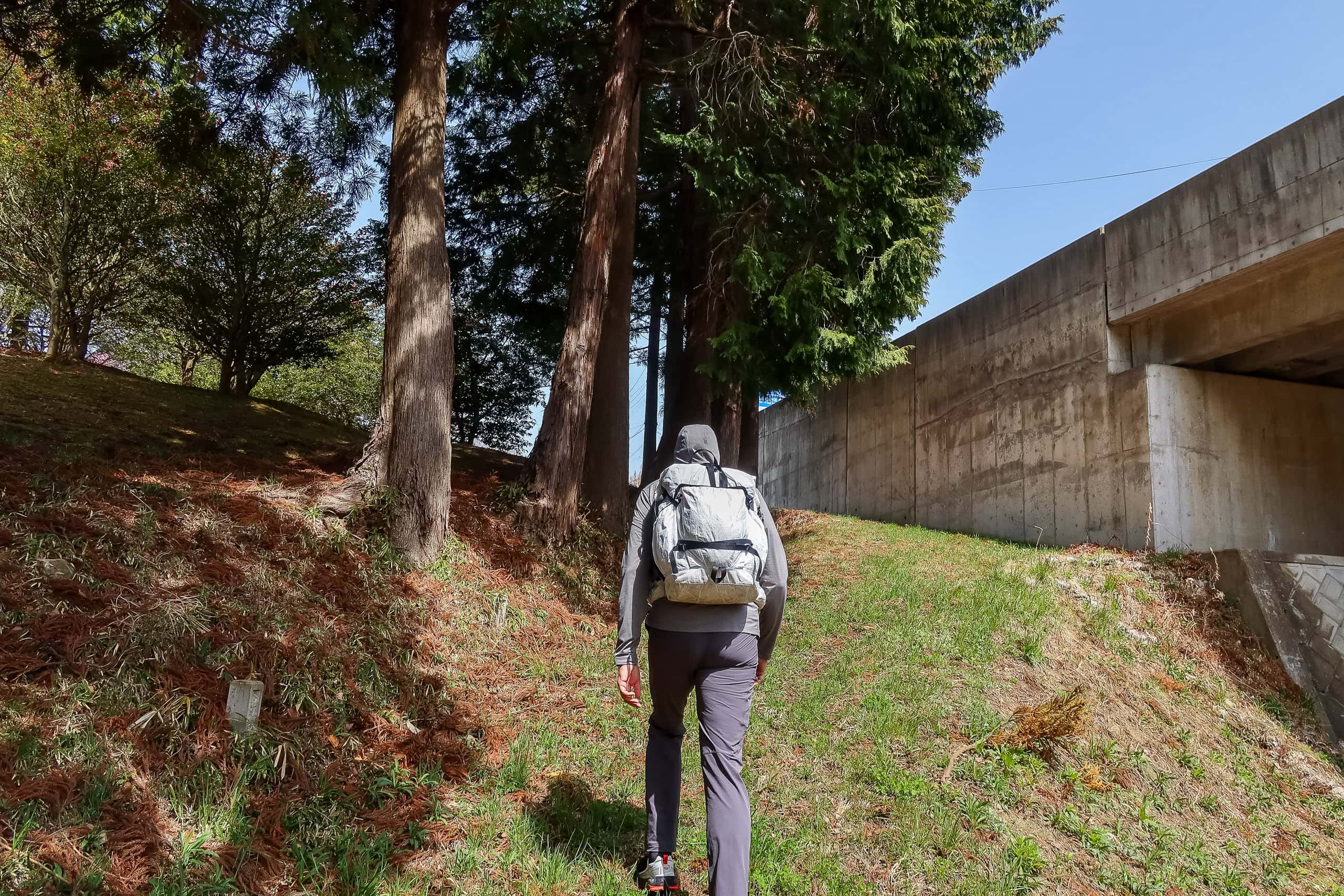
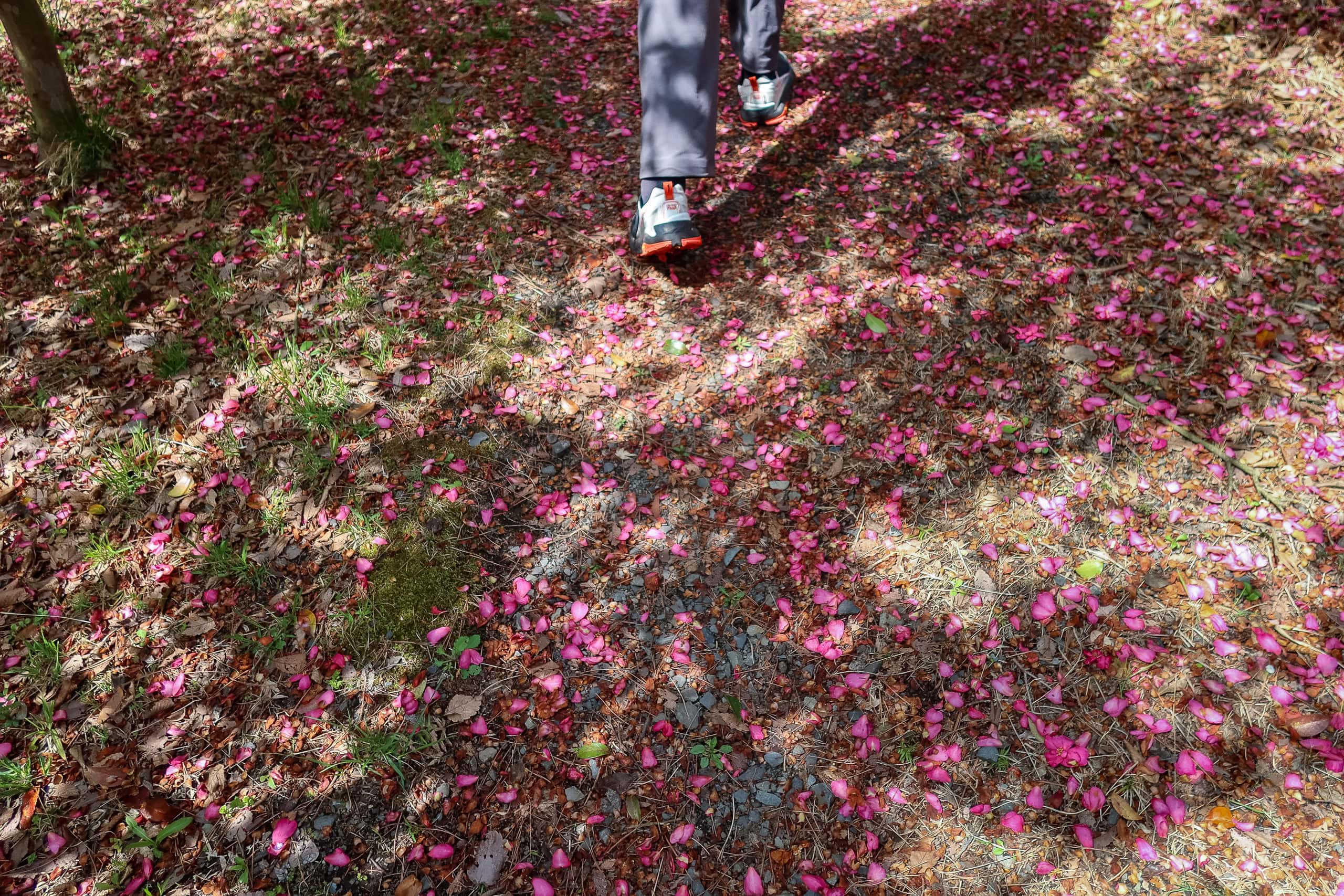

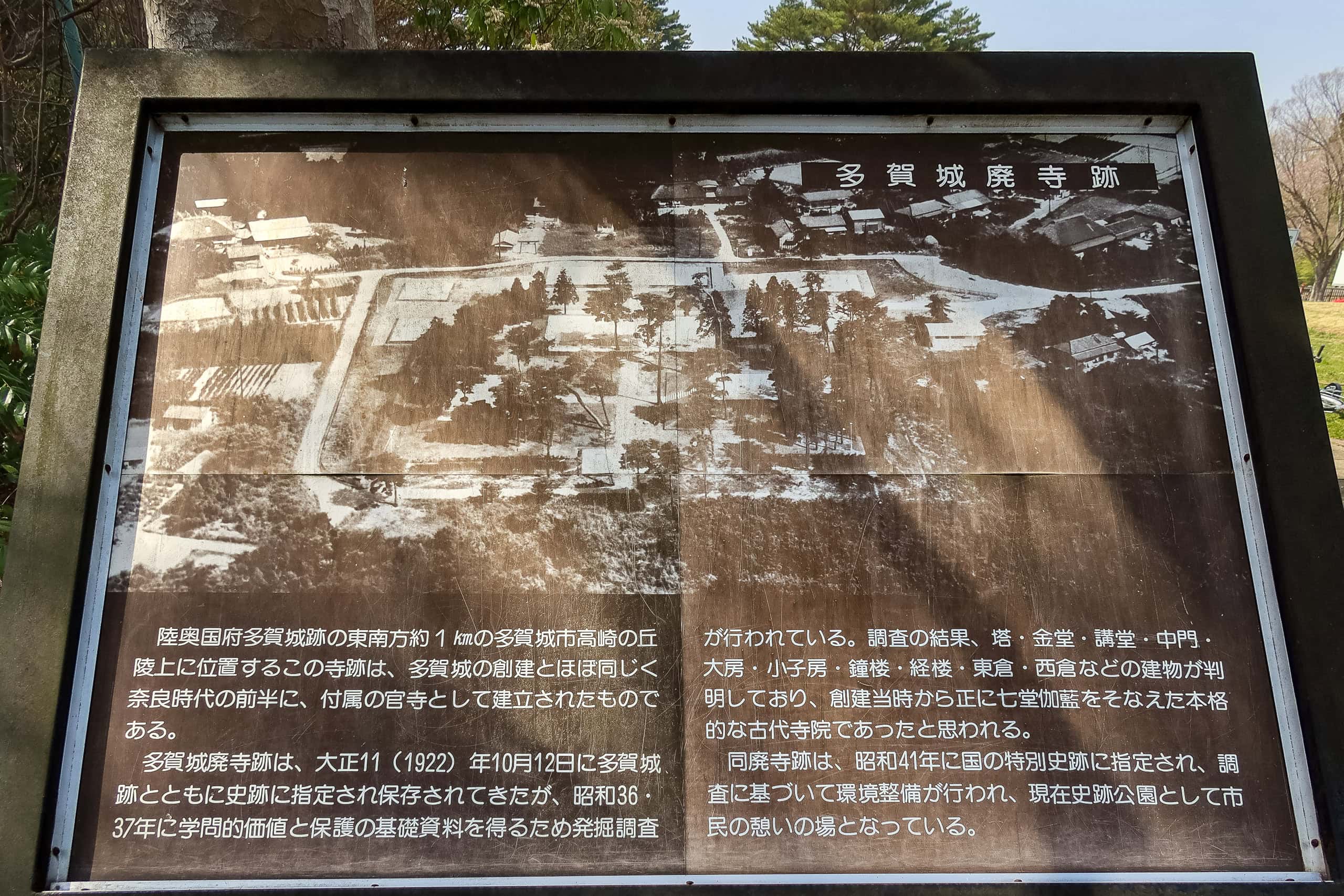
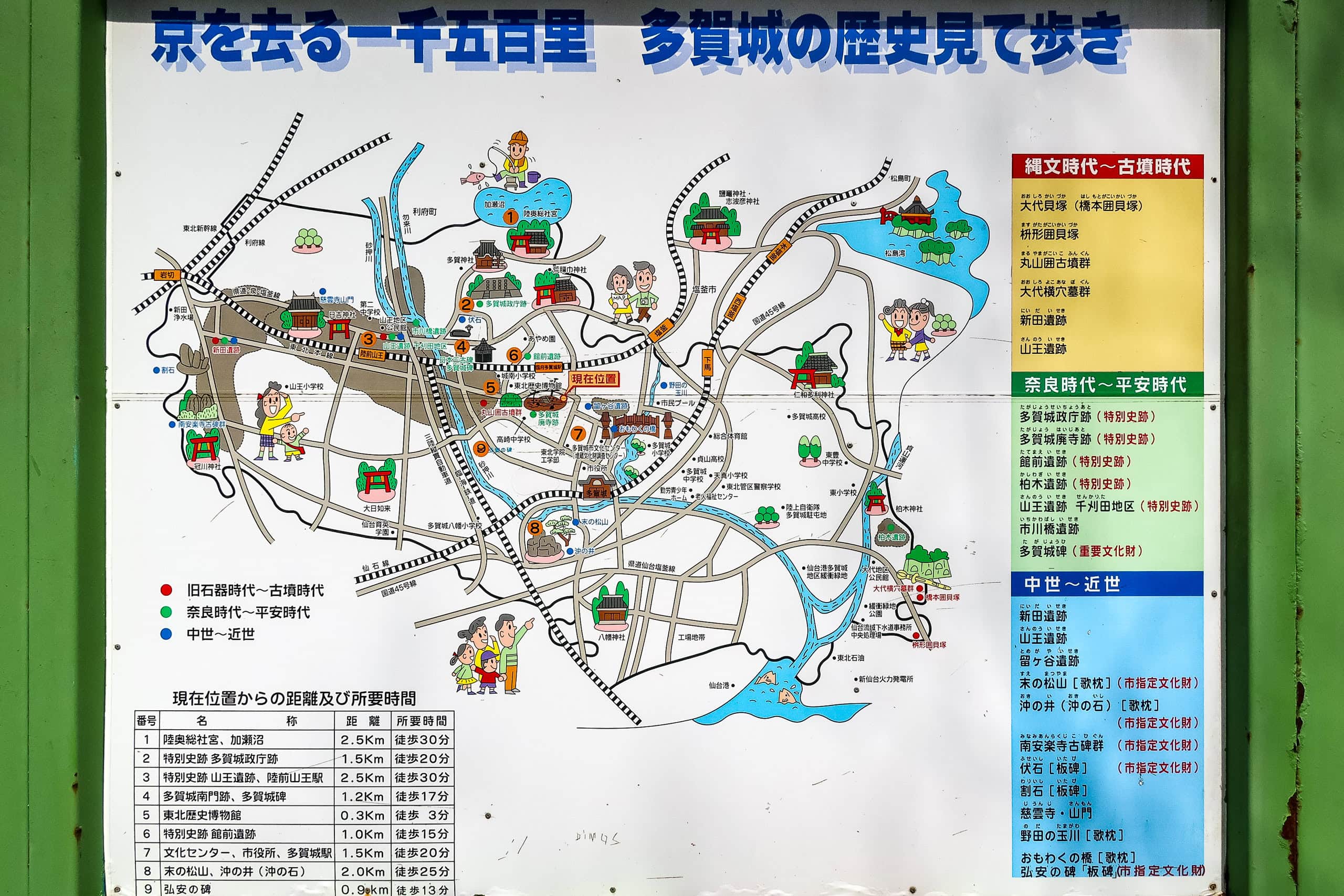
In the city of Tagajo, several large open areas were usually covered with lawns, not completely flat but systematically placed square or circle-shaped low mounds. These were the former sites of ancient Japanese government facilities during the Nara period, approx. 1300 years ago.
Led by the MCT route, we walked across those historic sites and passed by old Shinto shrines and open-air history museums. We also found an interesting vending machine selling various vegetables, locally grown and fresh from the field right behind it.



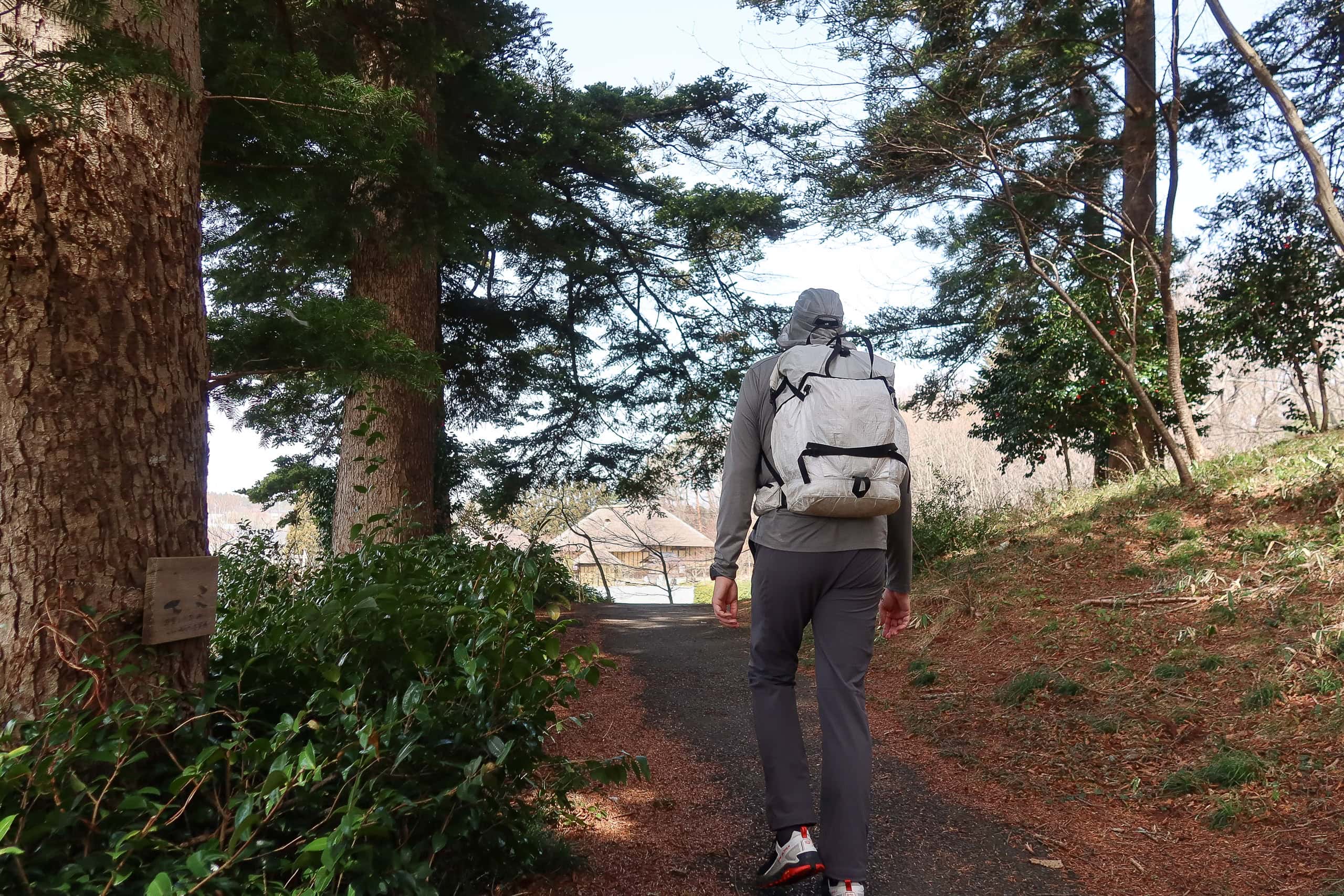
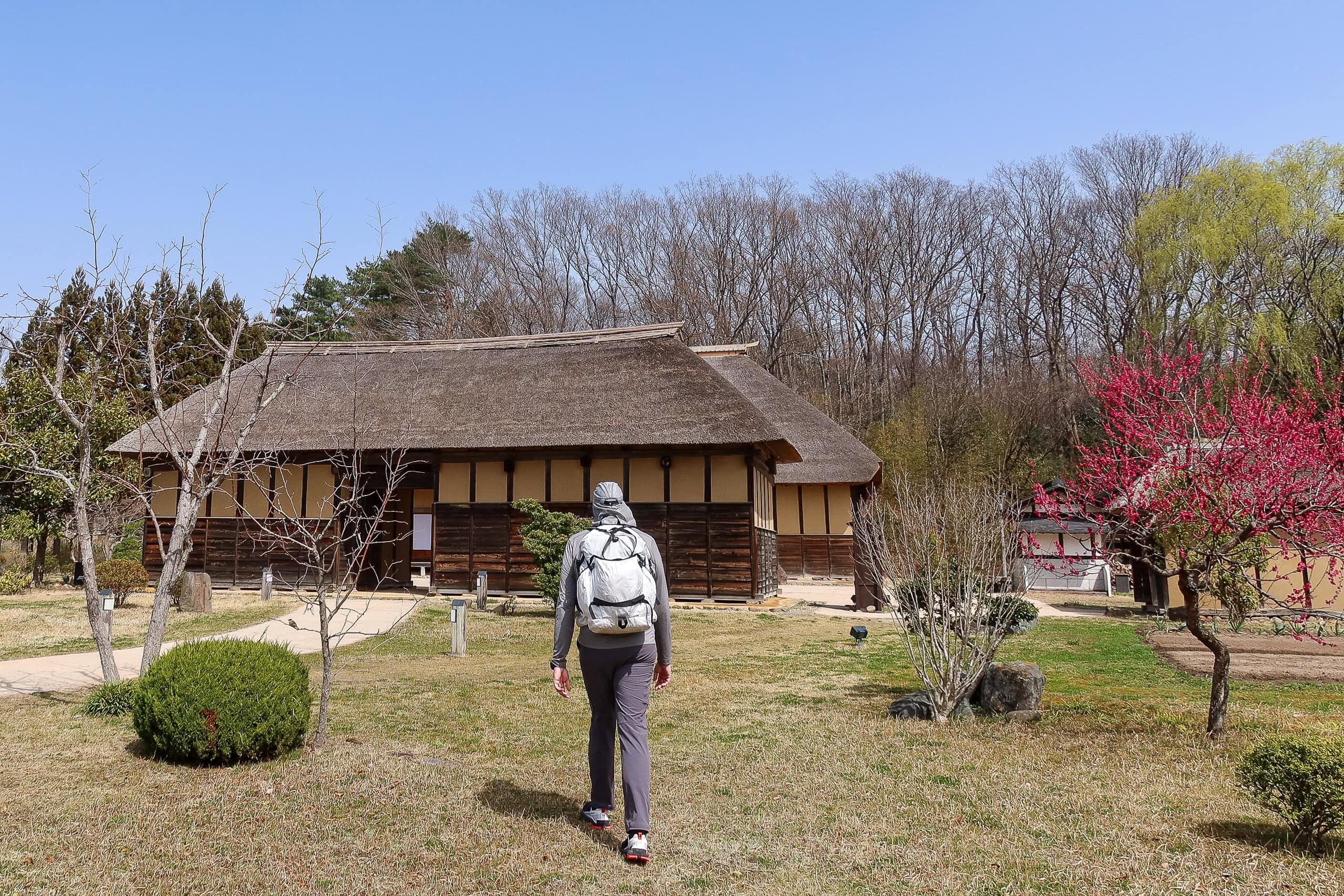


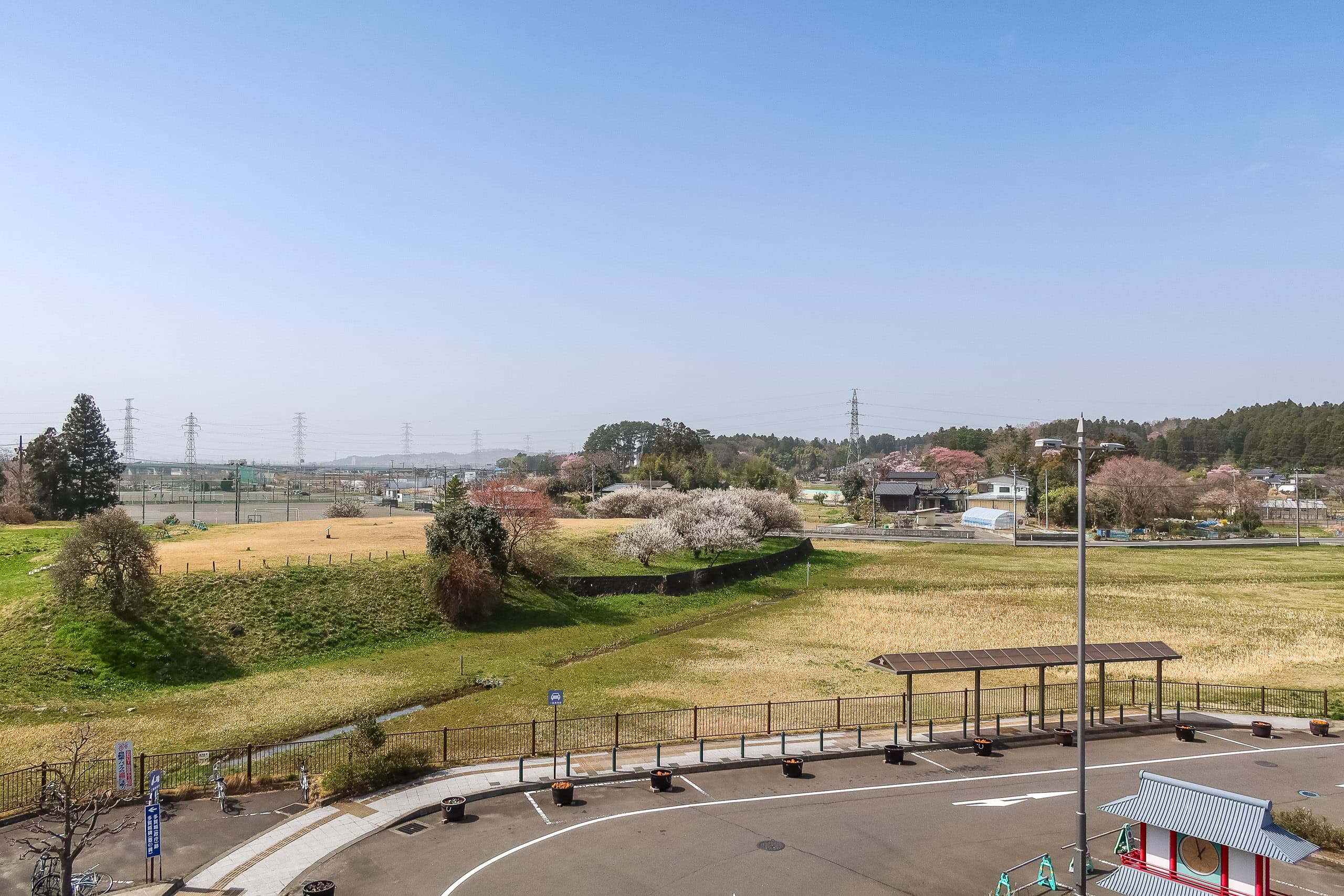
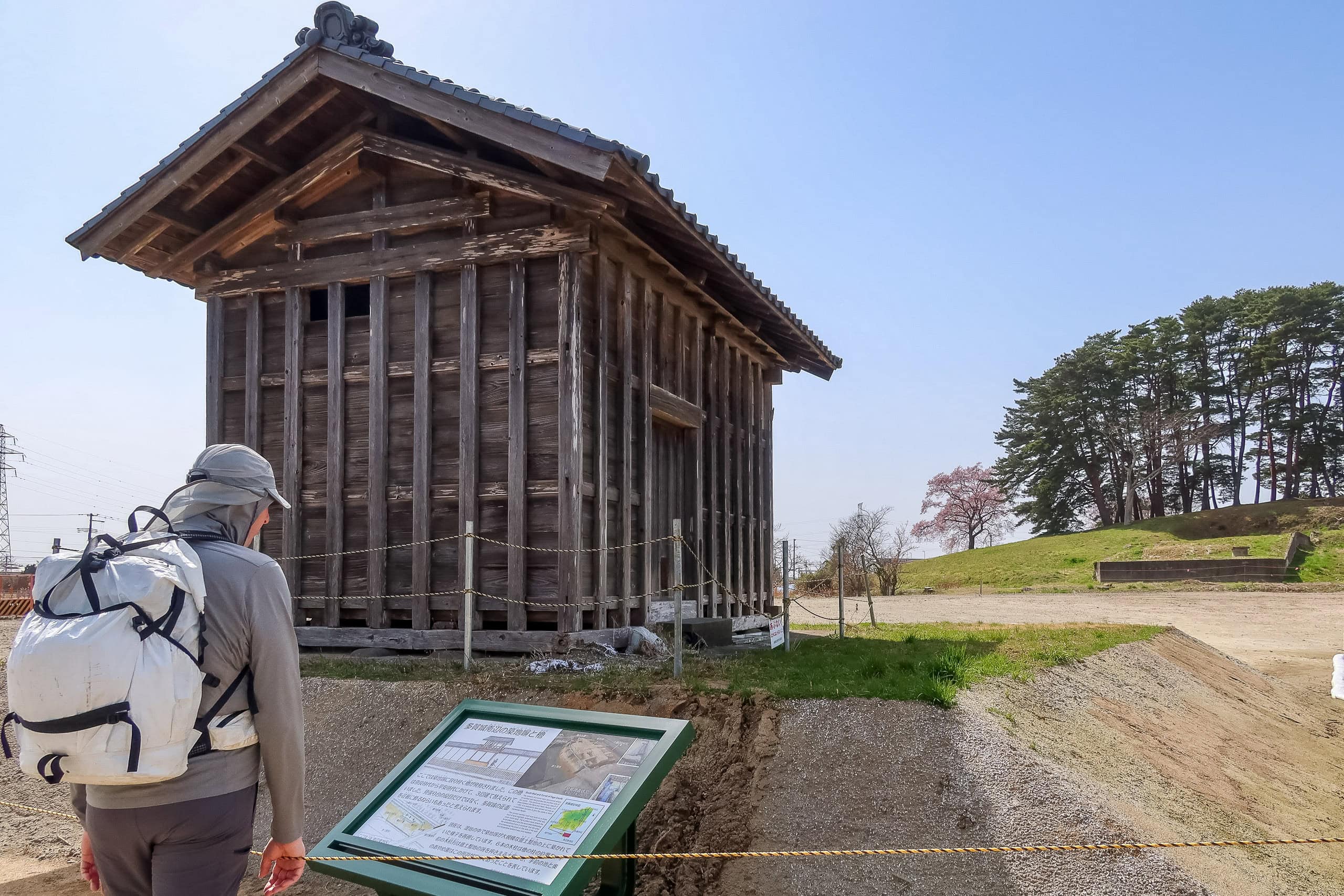


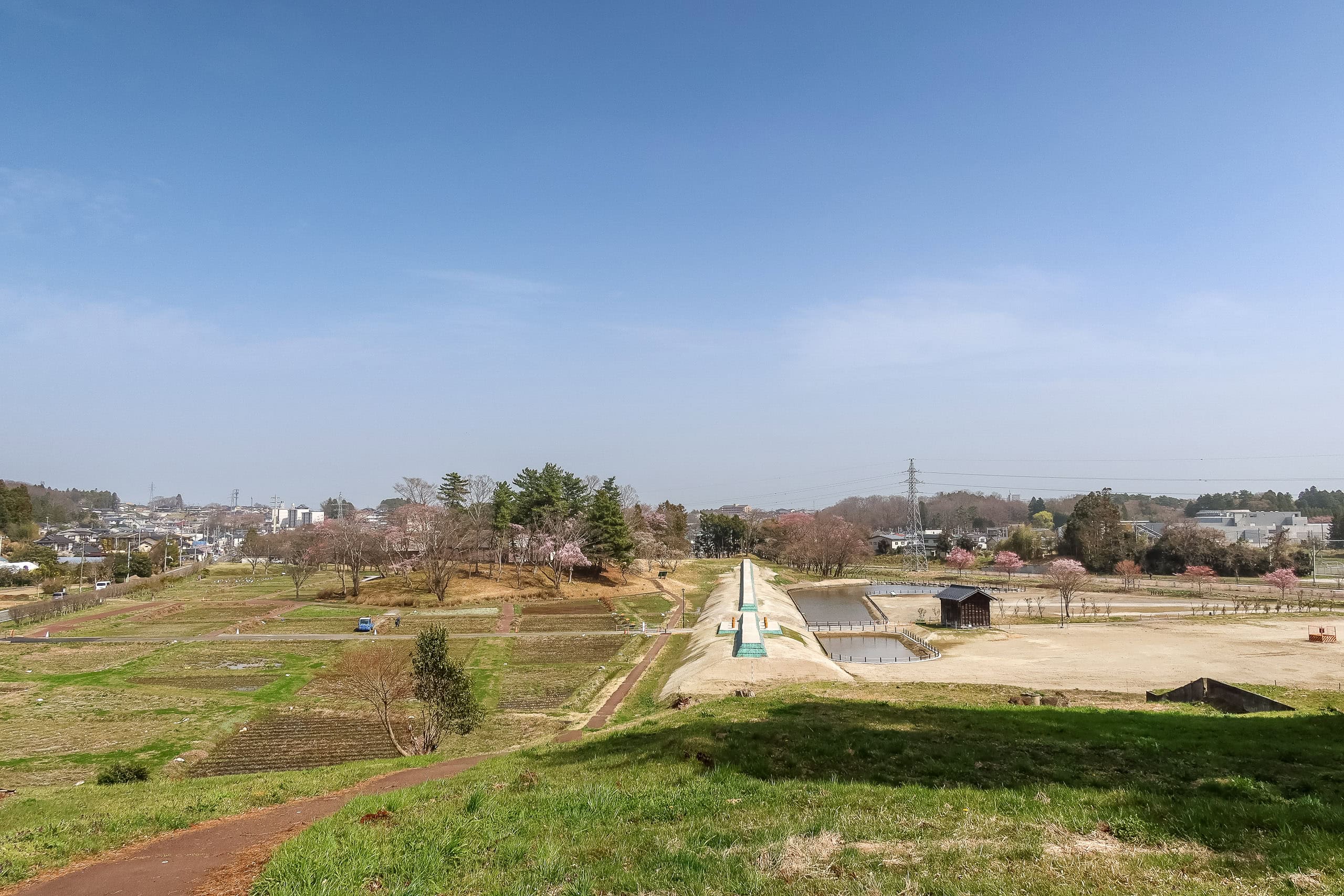
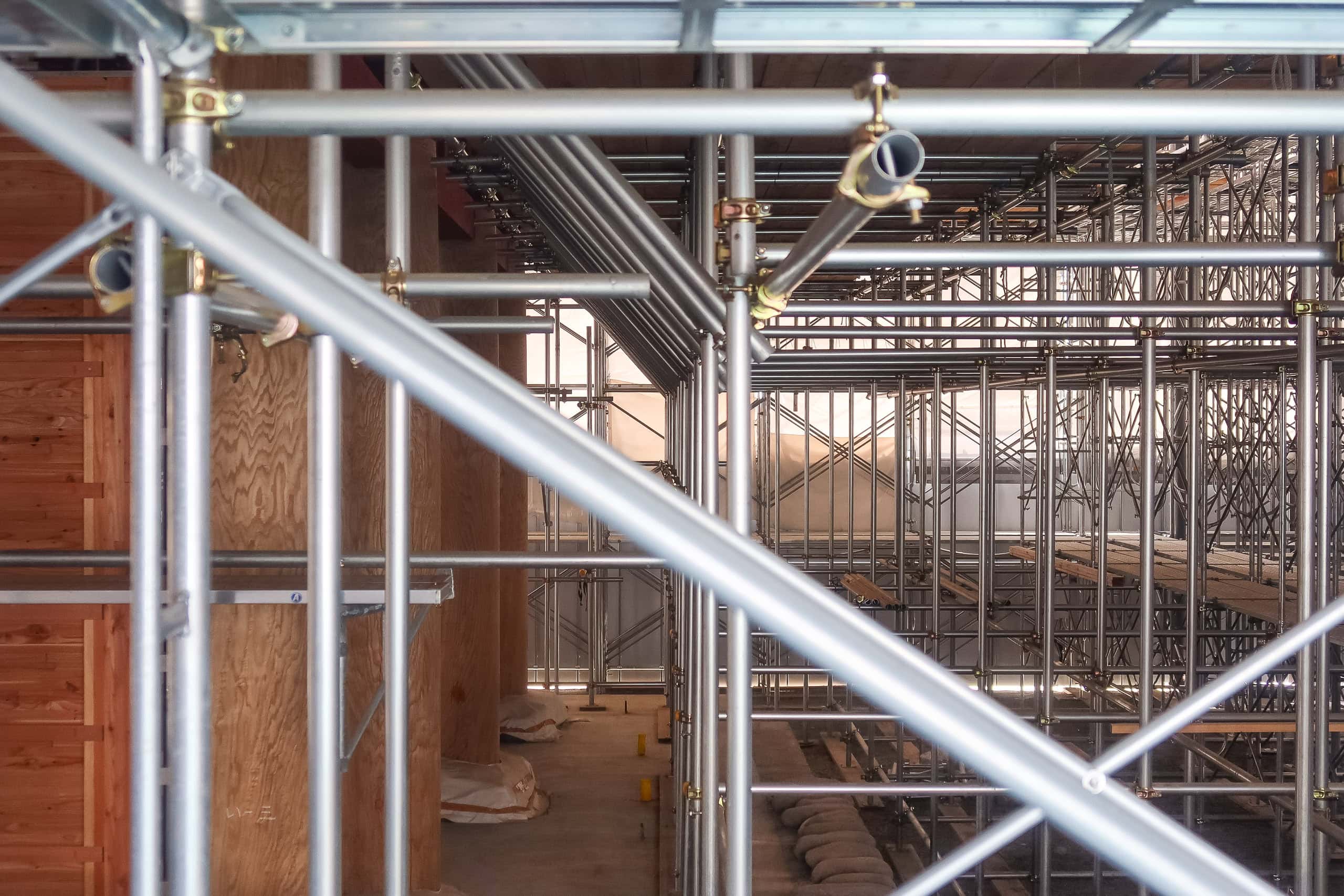

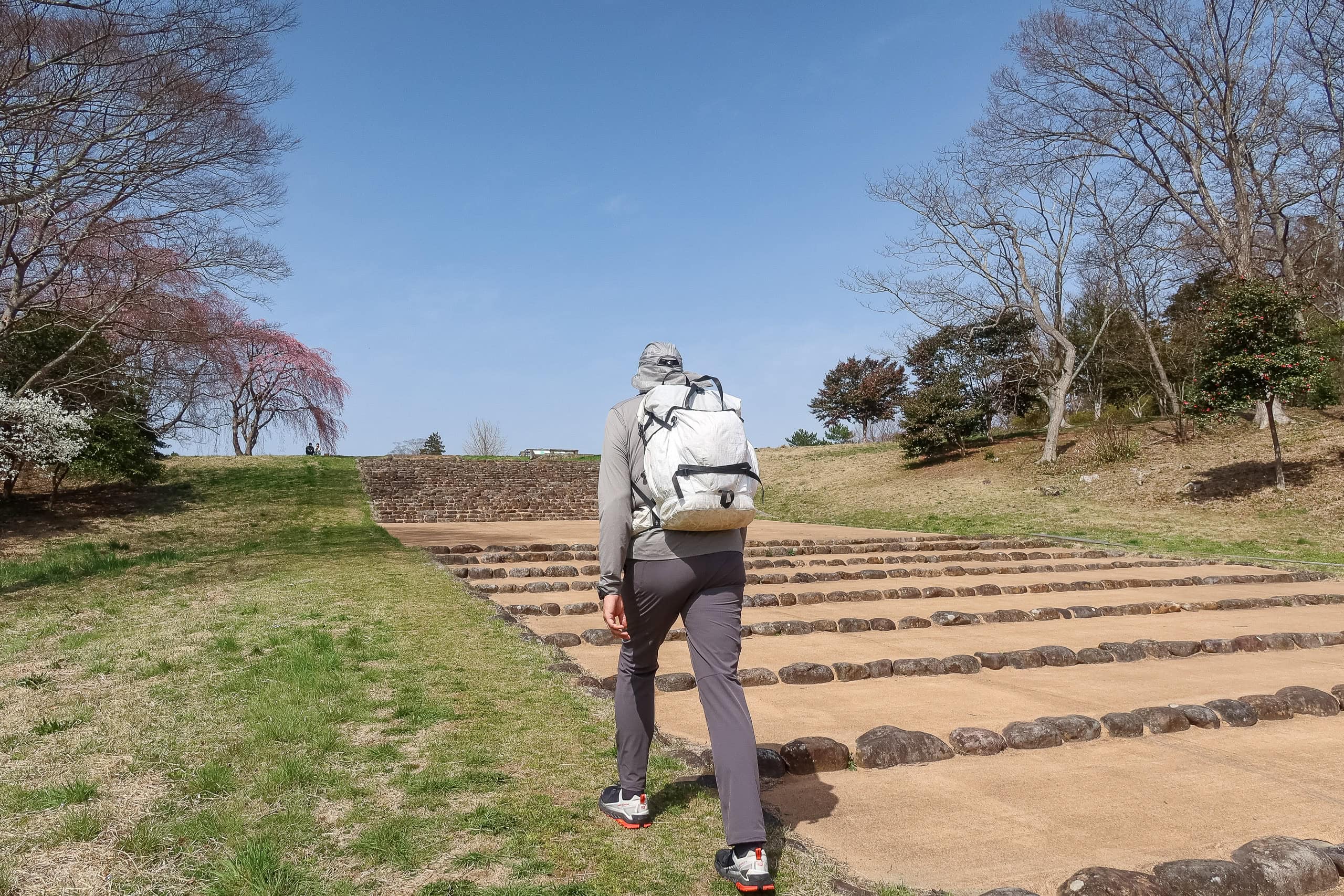
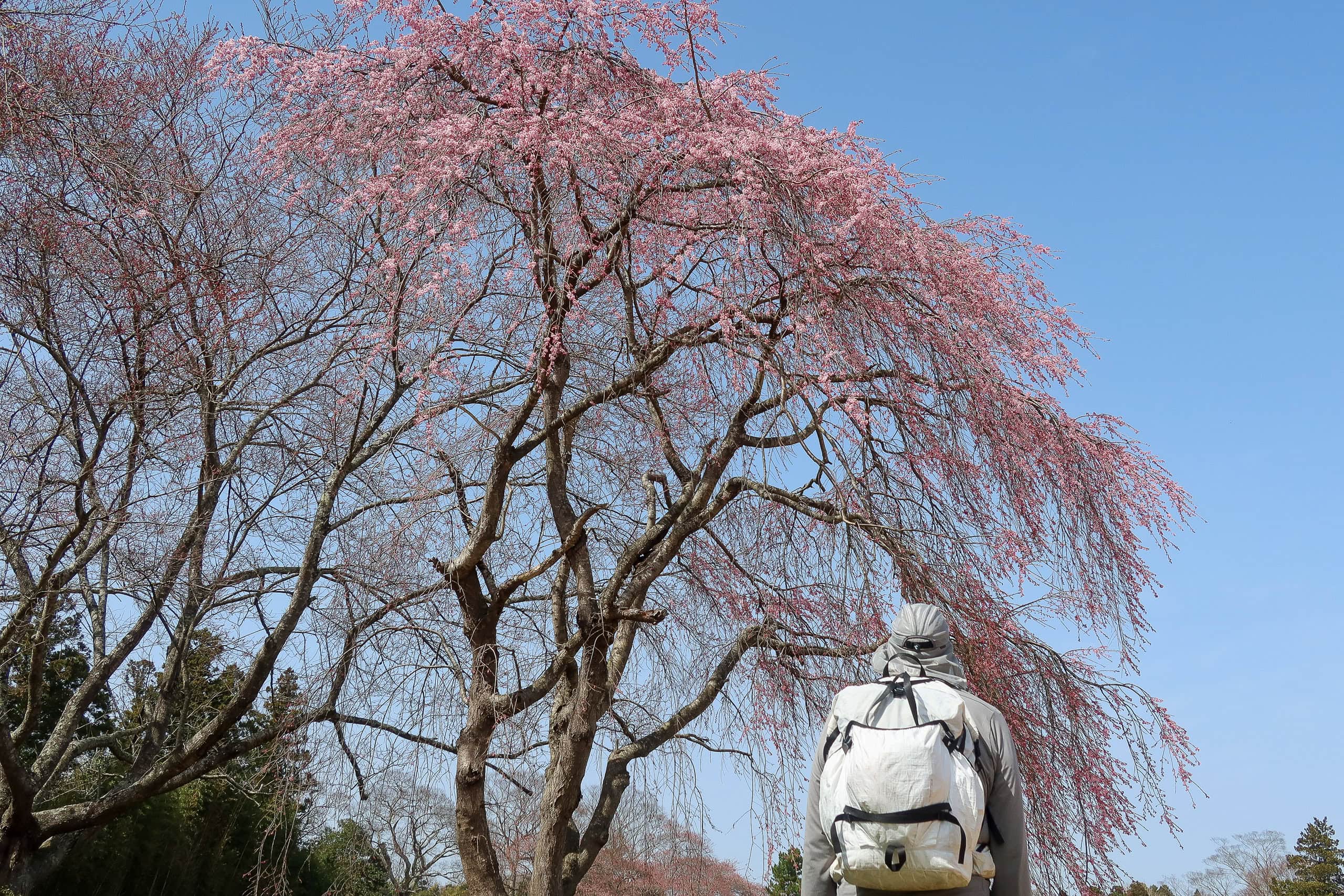


More than 90 % of the time, the trails were asphalt-paved roads. But, thanks to the beautiful spring weather, many interesting things to see and learning a lot of history from the information boards at each site, our walking today was very fun and easy, with easy access to vending machines, food, and bathrooms, much better than the past two days of continuous boring concrete roads.


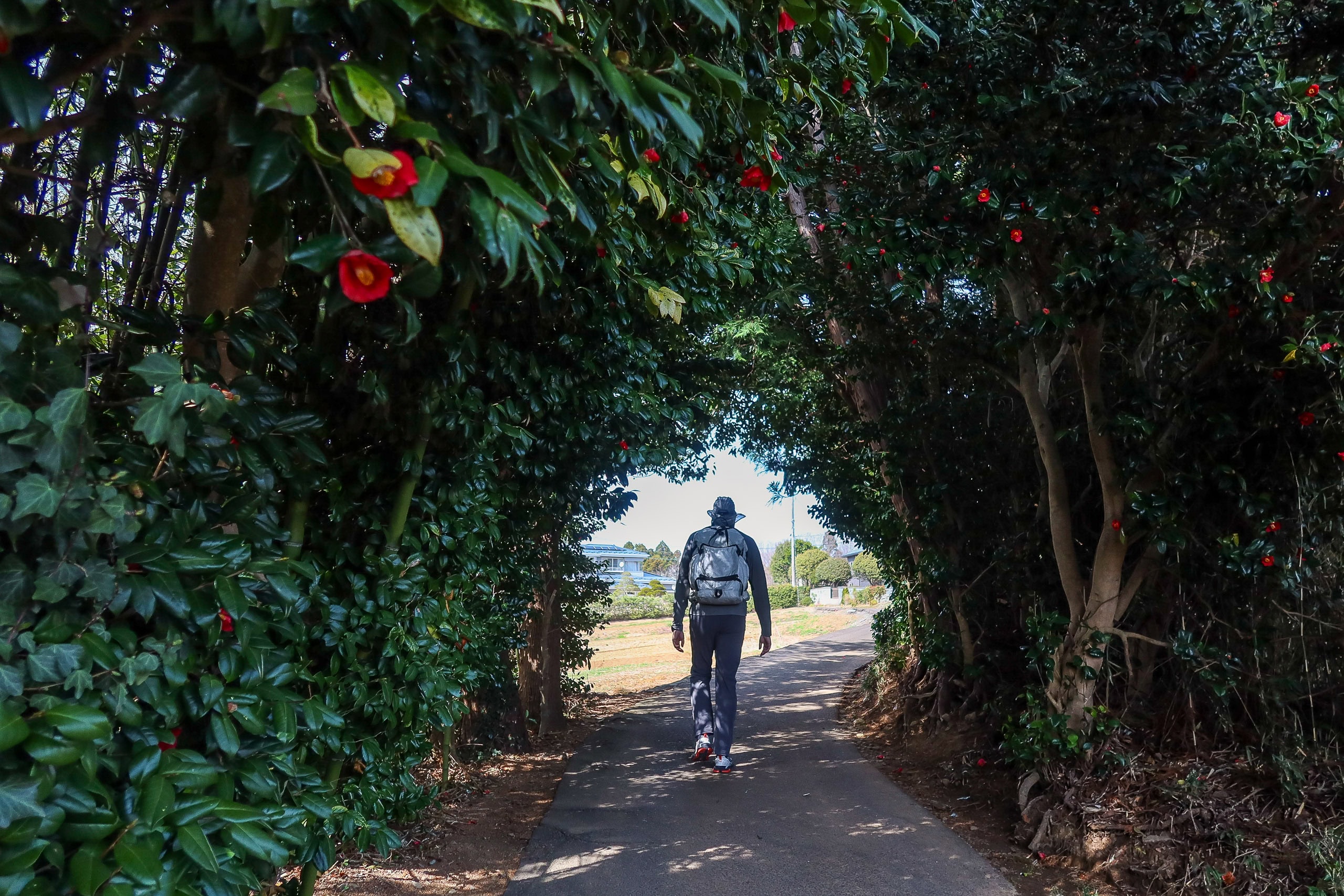
The only short part of the route was on the natural-serface trails. It started with going on a farm road between vegetable fields and then through a narrow path in a grove. At a big pond called Kase-numa 加瀬沼, where families with little kids enjoyed the view over the water, the narrow path merged into a walking trail around the pond and, after a while, led us to a small shrine.
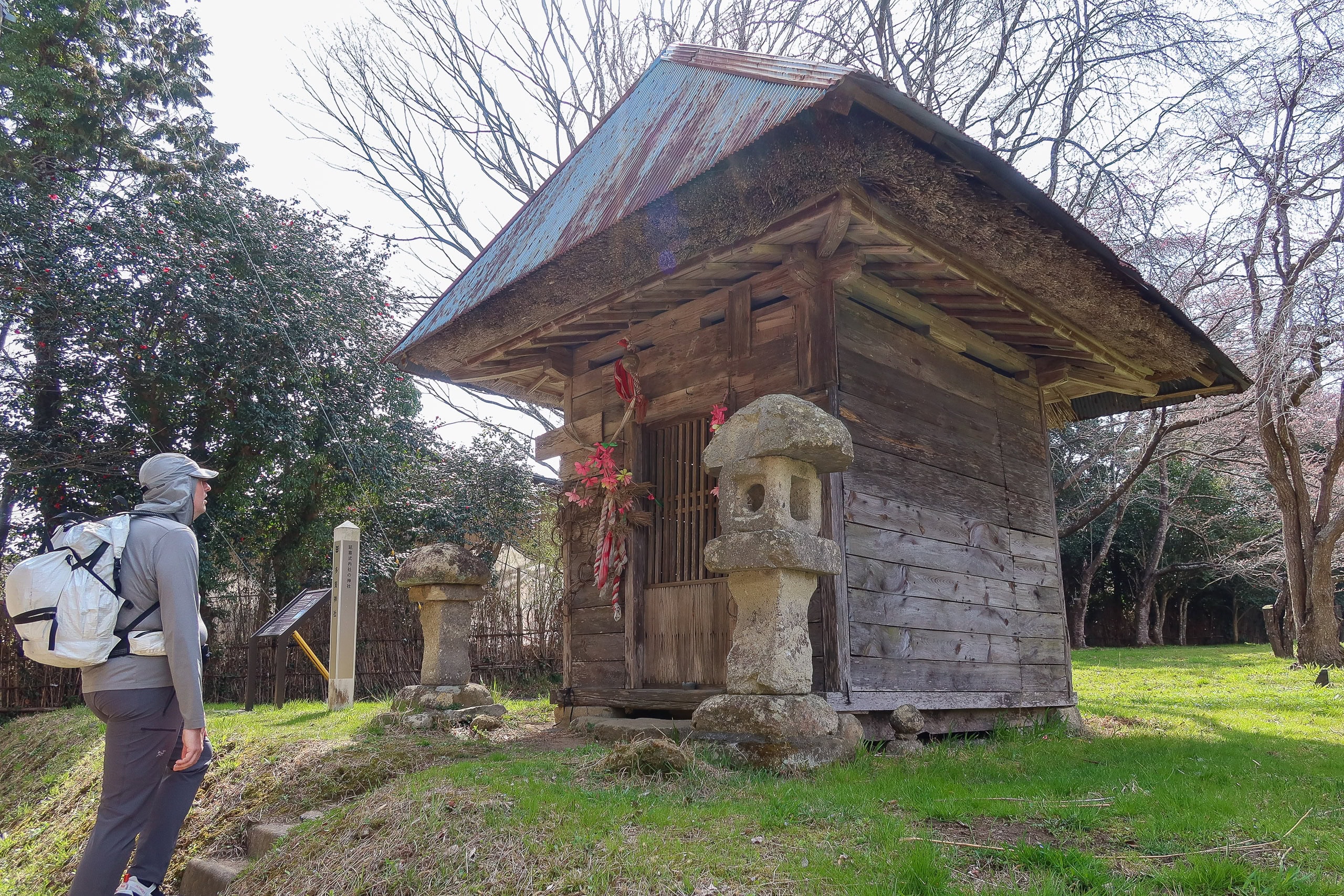
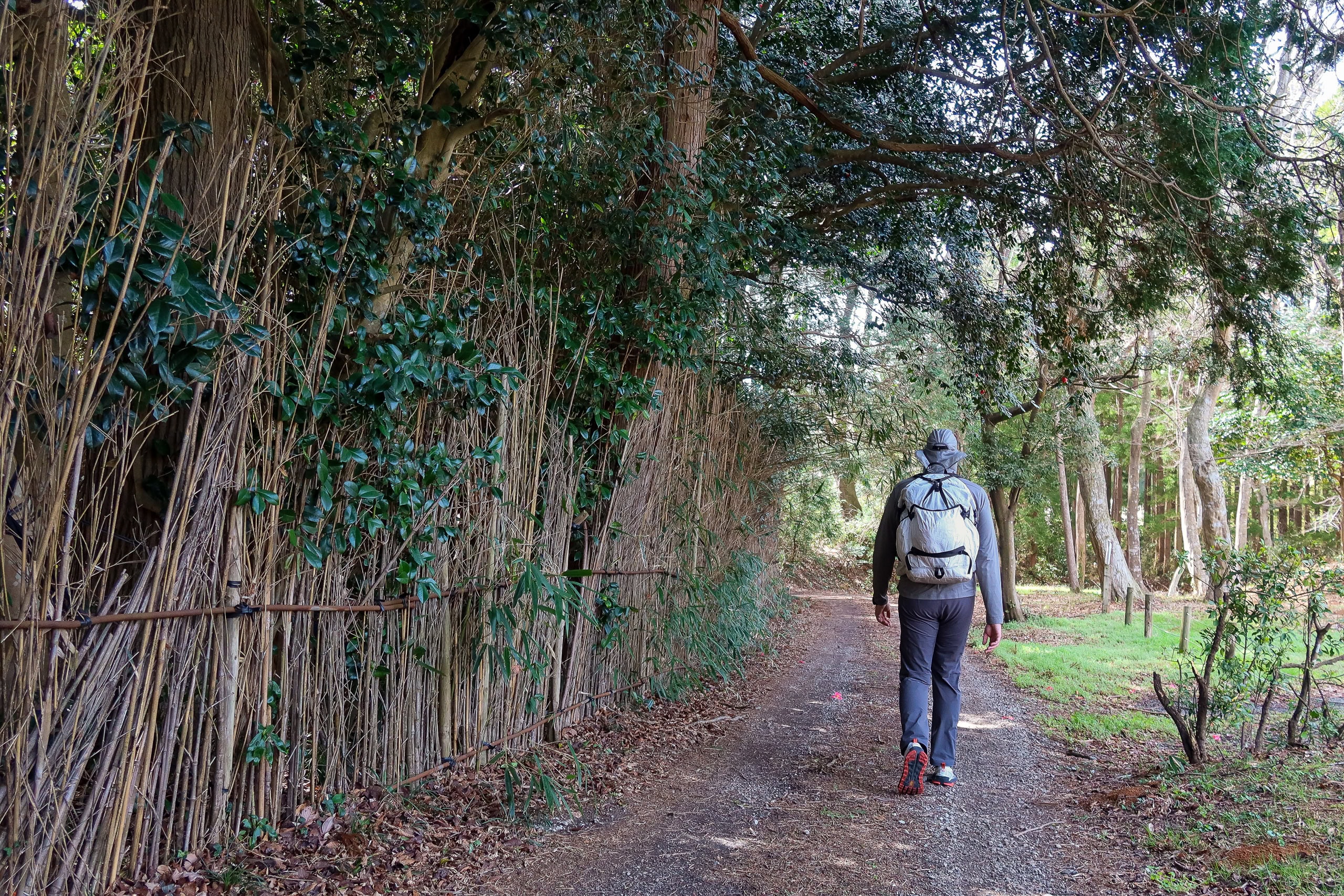


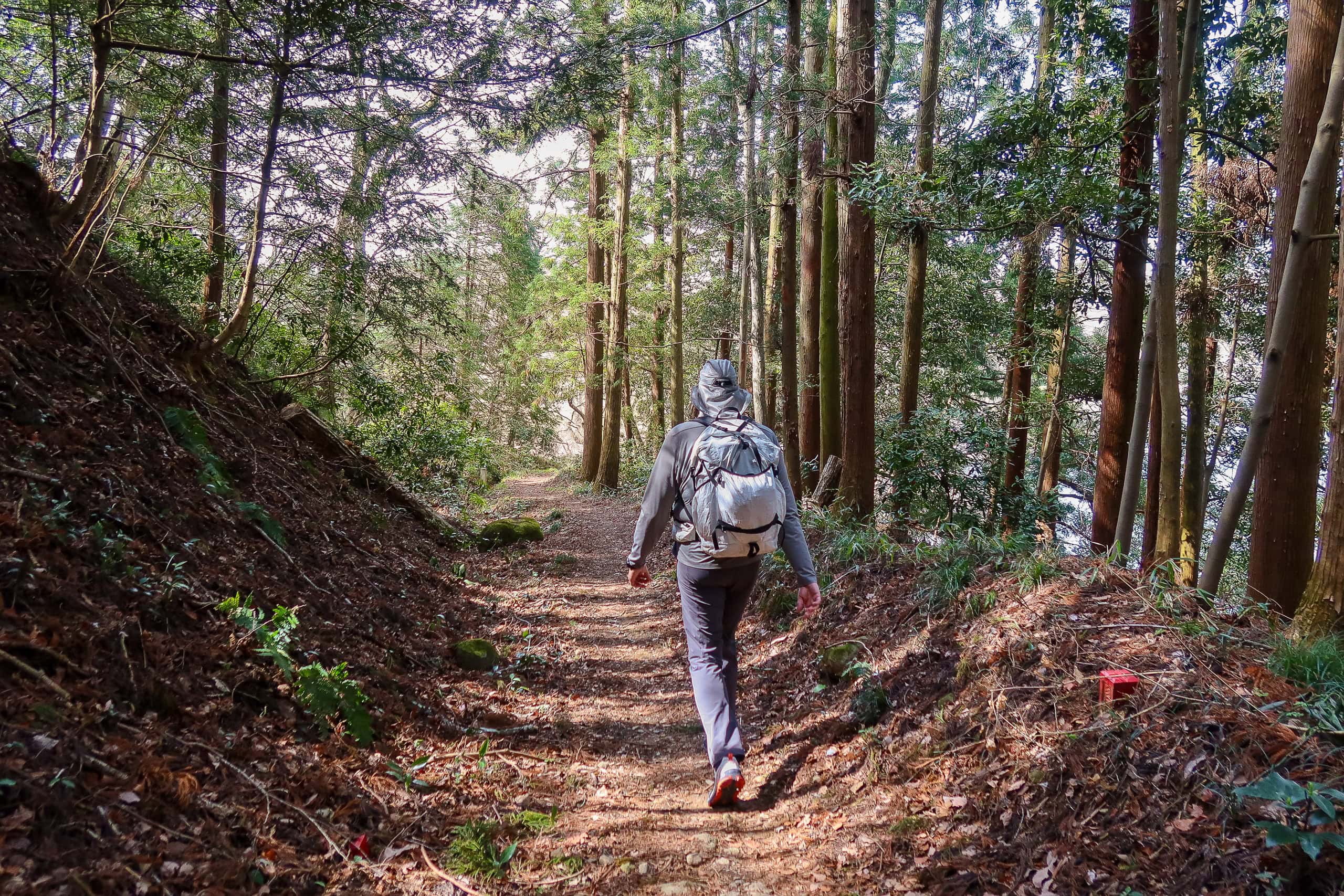
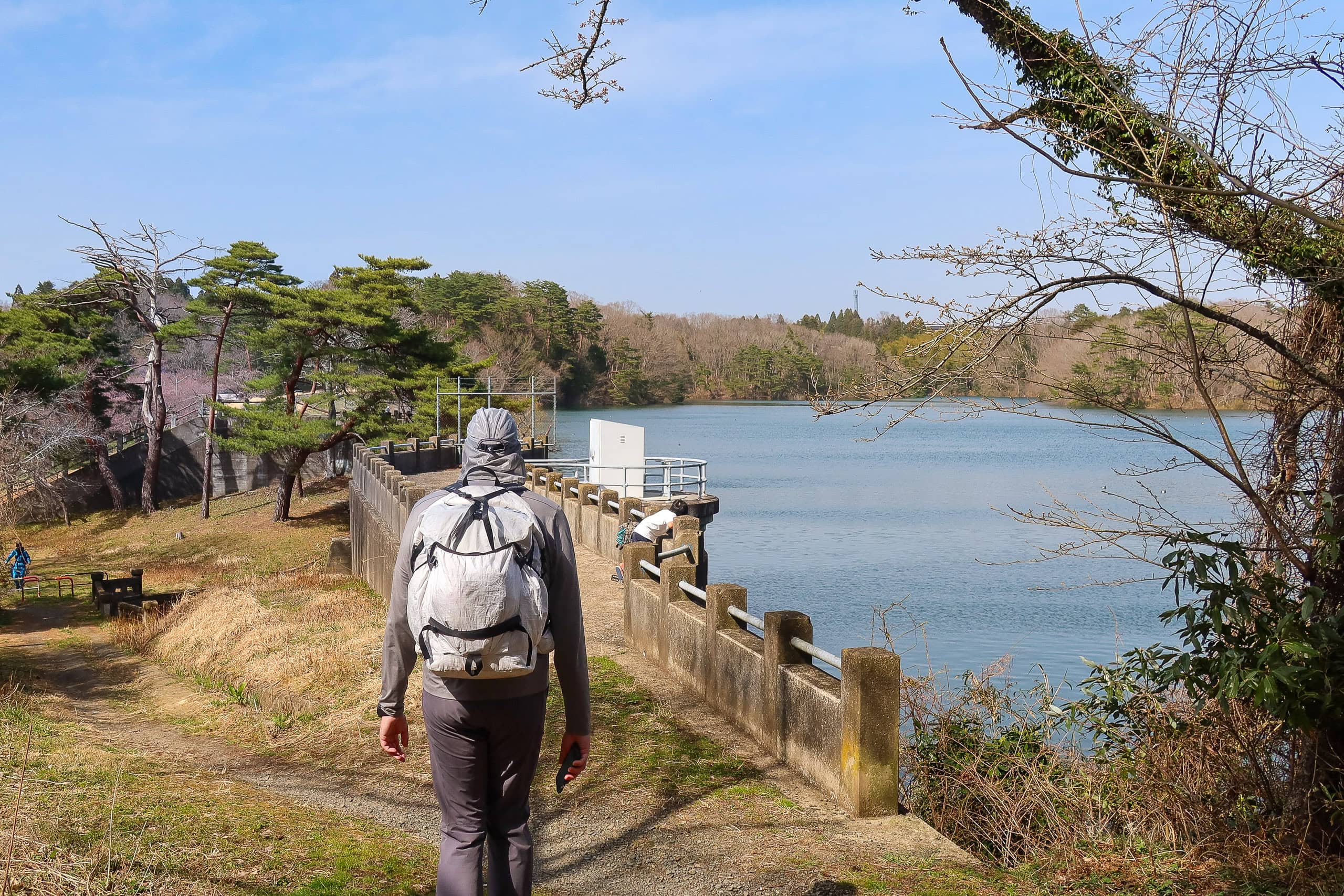

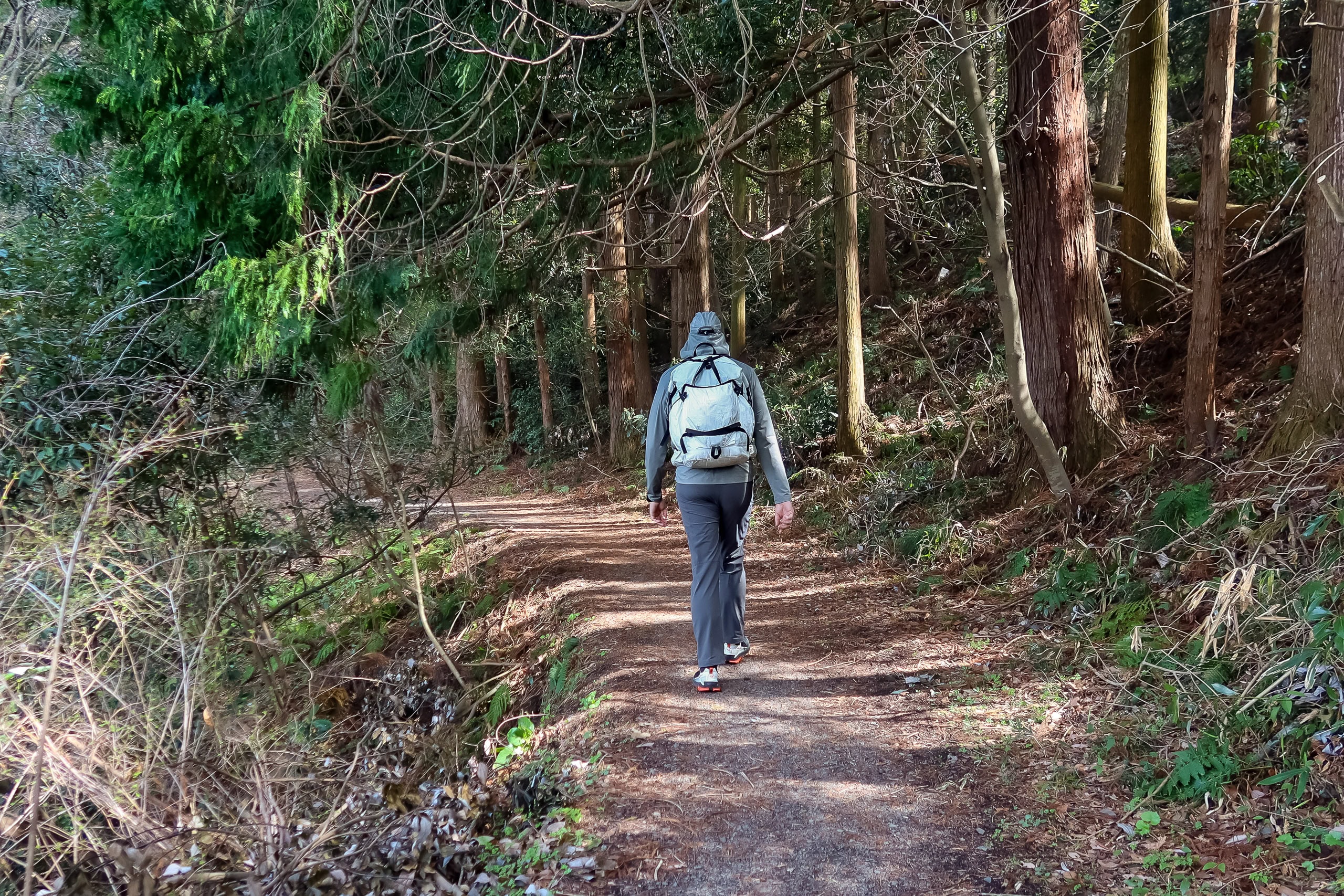


As always, we didn’t realize the walking trail around the Kase-numa pond was drawn exactly on the municipal borders. We unknowingly already finished the part of the history-rich little city of Tagajo and were walking down a street of the next city, Shiogama 塩竈市.
Shiogama is a port town. We were walking down towards the Shiogama bay. Our hiking goal for the day was to reach the ferry port there, from which we would take a ferry to remote islands the next morning.
Yes, hiking on the Michinoku Coastal Trail does involve walking through remote islands in the Pacific Ocean.


Shiogama Shrine
But just before entering the port area downtown, which was straight down this road, we found that the route line on the map showed a 90-degree left turn, leading us to the undoubtedly most famous place in the city: Shiogama Jinja shrine 鹽竈神社.
Looking around, many small hills surrounded the busy downtown area around the port. Earlier in the day, we learned that the sealine in this region used to be much more inland, so this downtown area must have been under the water, and the surrounding hills were either small islands in the water or coastal cliffs hundreds of years ago…
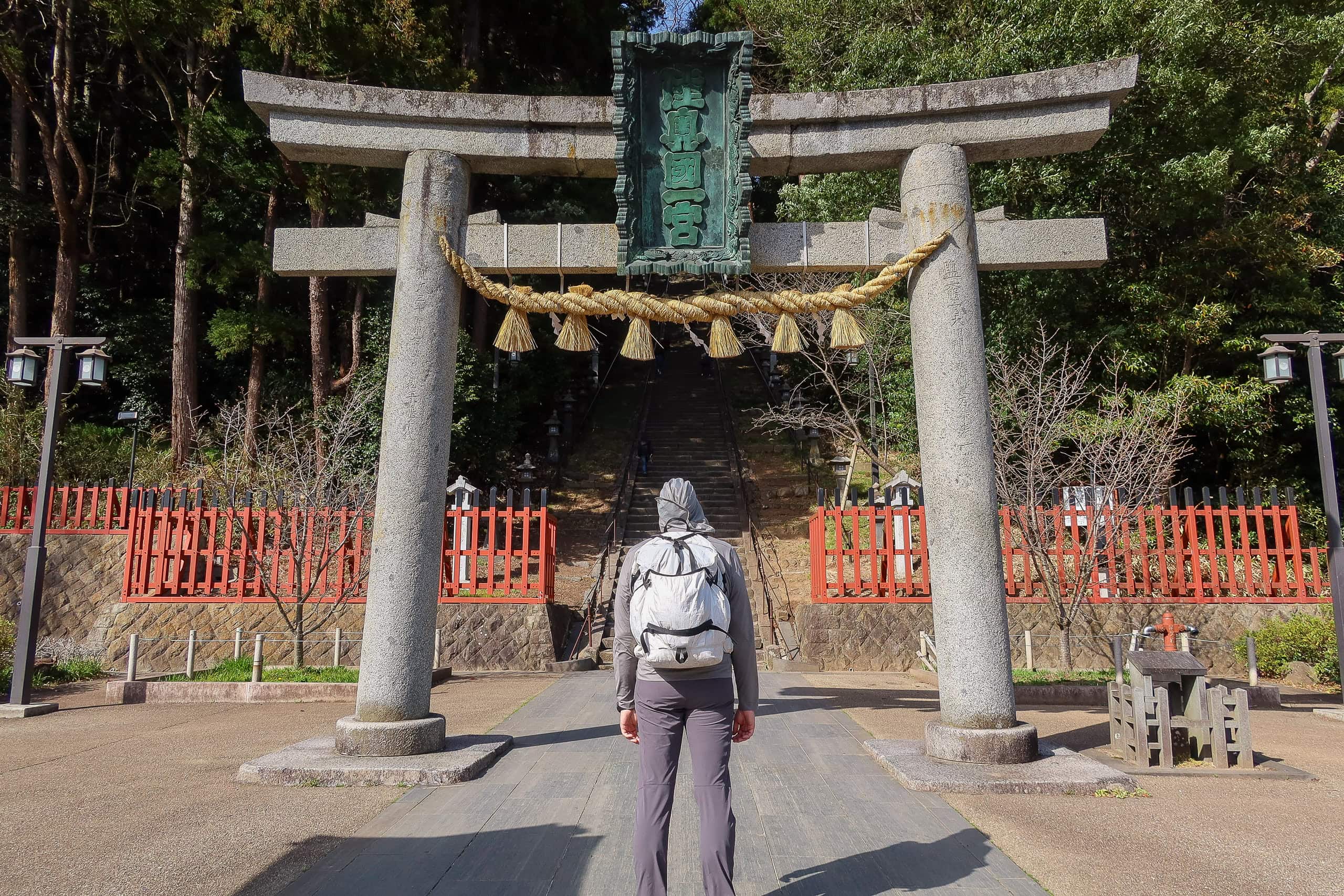
Well, I confess I was just making a poor try to draw out the shocking reality because we were standing in front of the big rock shrine gate that the MCT route indicated to enter. Looking beyond the gate, I was literally petrified by what my eyes were seeing.
First of all, the great Shiogama shrine stood on the top of the probably highest hill around here. We could not see the shrine buildings as the hill was covered with thick forests. But what we did see was multiple flights of super steep, long stone stairs going almost vertically straight up to the top of the hill.
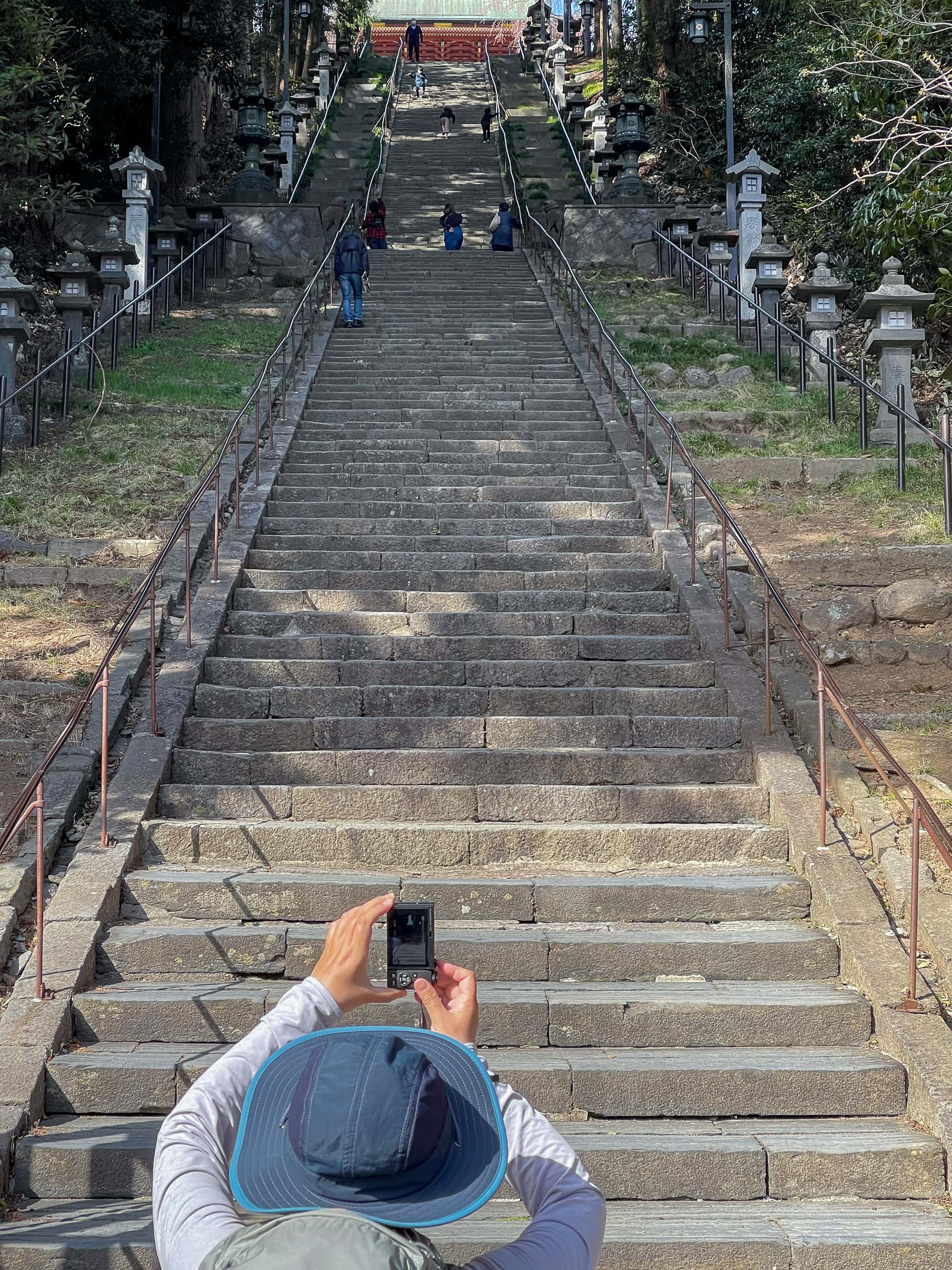


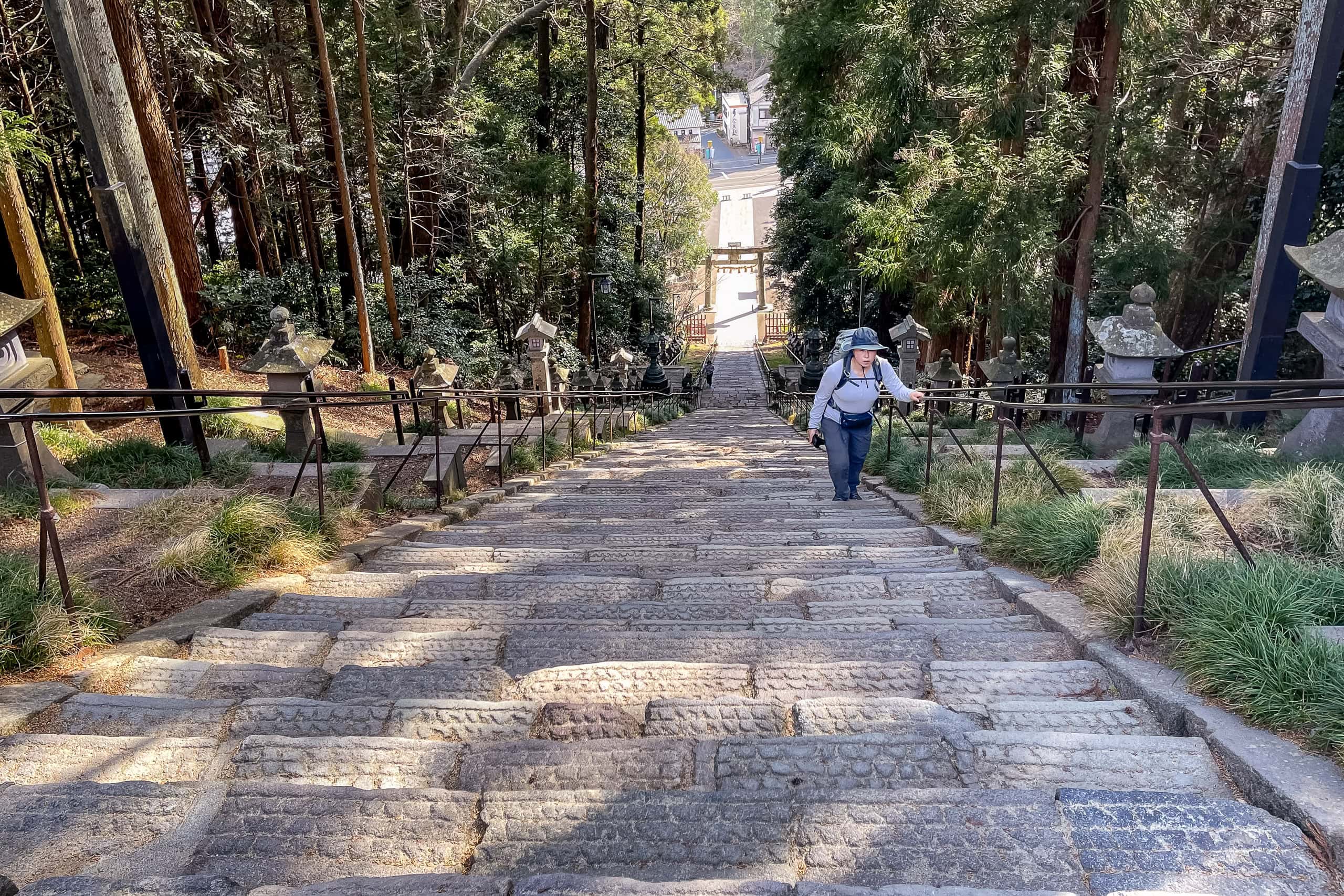
My psychological damage caused by the shocking visual impacts of the stairs was pretty significant, as I saw some visitors holding onto the metal handrails and literally pulling themselves up. Even poorer were the ones struggling to walk down. They were tightly crutching the handrails, carefully taking one small step down at a time.
This is not something you want to deal with at the end of a long walk all day, especially when I was so off-guard, believing our walk for today should end in a minute.

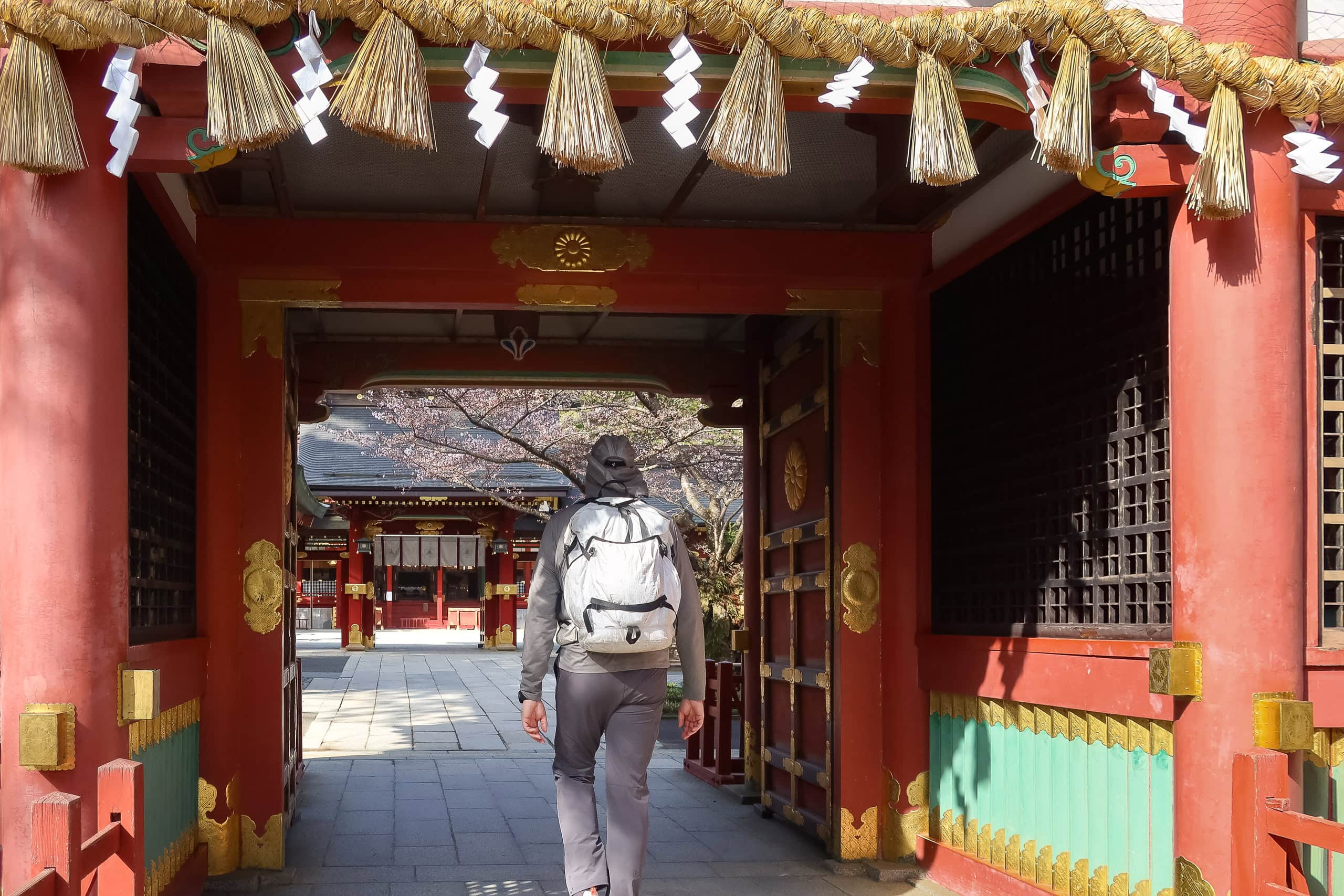
While Erik was almost joyously hopping up all the steps, I needed much longer time and serious struggles to make it up, but in the end, I managed.
This beautiful historic shrine complex was a true reward for visitors’ sweat and tears over the stone stairs. The vermillion-colored shrine buildings, with the bright blue sky in the background, were absolutely stunning. Dozens of various kinds of cherry blossom trees fringed corners. The view of the bay and port town over the flourishing Japanese garden was just breathtaking.


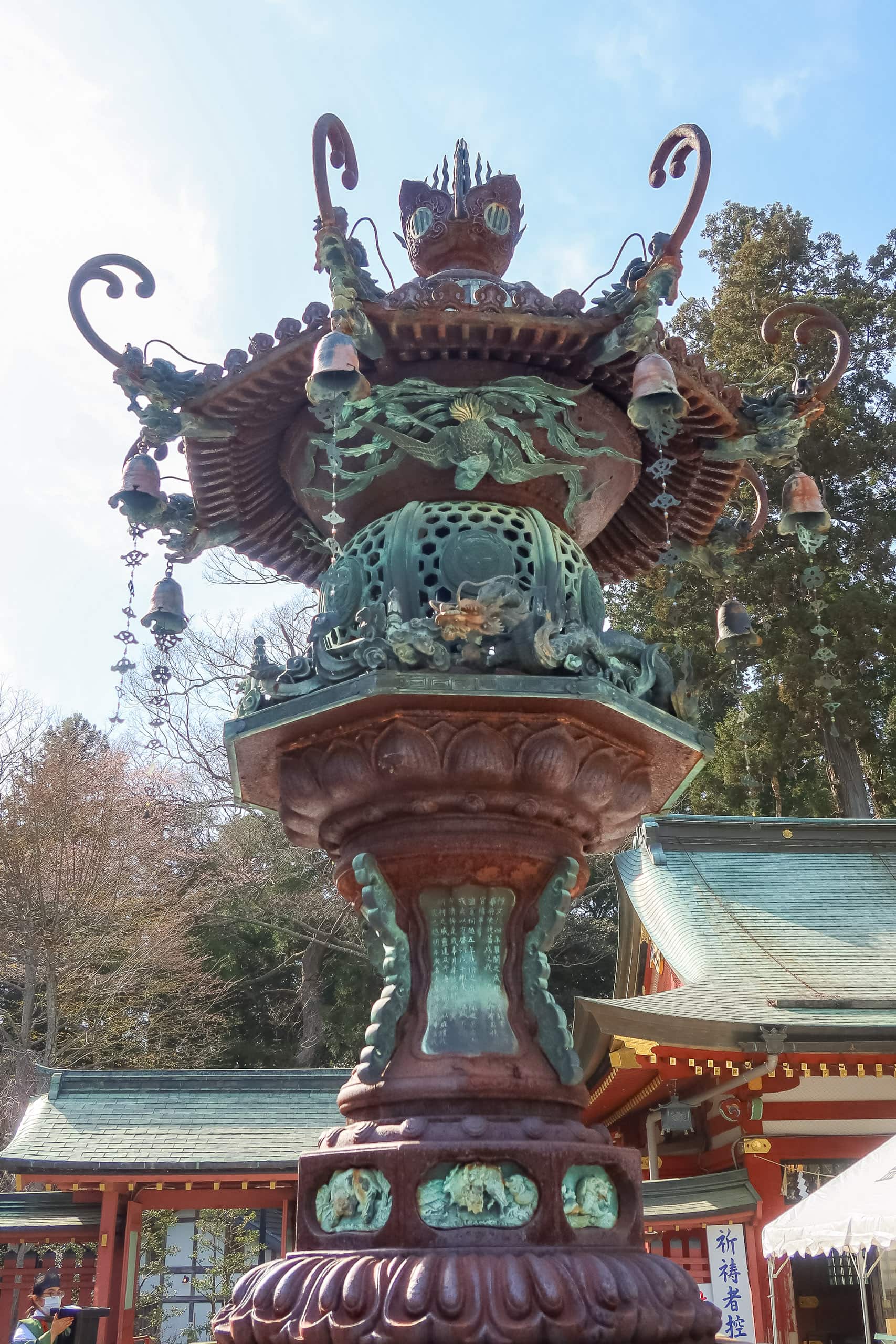

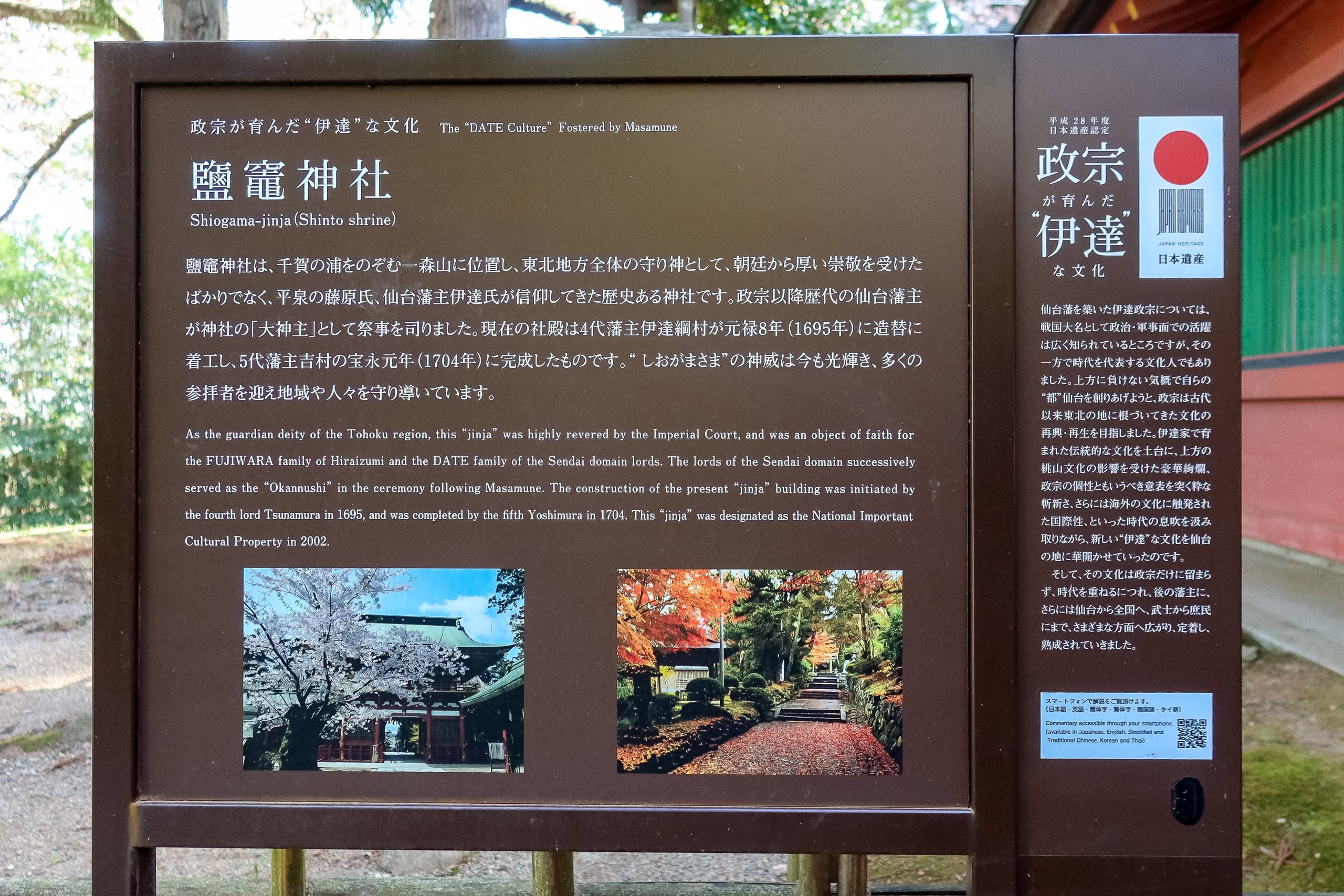
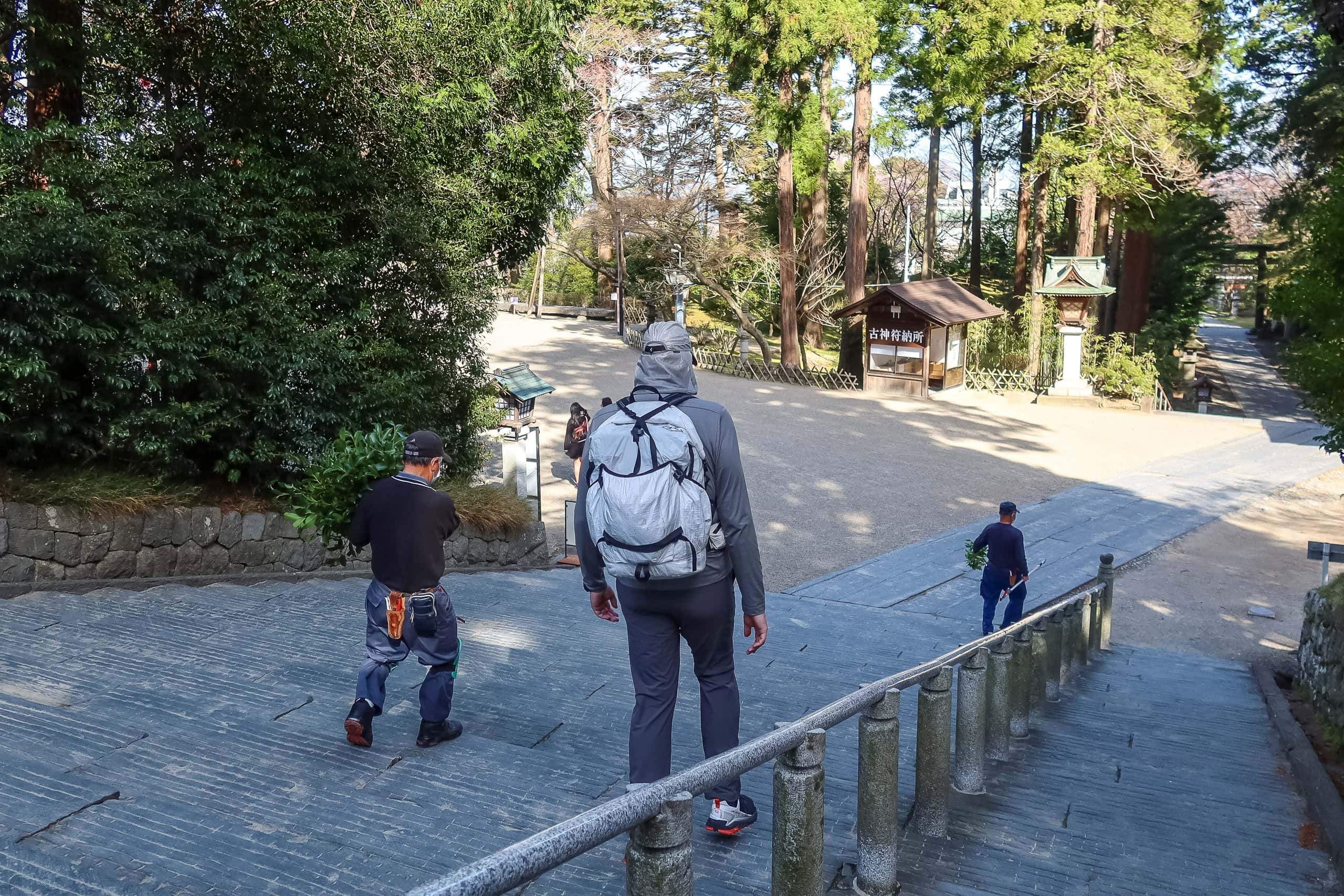



If we had arrived earlier, we would have enjoyed tea and traditional Japanese sweets at a cafe by the Japanese garden. But we had to prioritize getting to our hotel early so that we could prepare well for tomorrow’s hiking on remote islands.
This Shiogama Shirine part was also one of the very rare times the MCT route actually goes inside a shrine or other historic sites. In many cases, the MCT route line runs near tourist destinations in the area but does not actually enter it. It is really up to each hiker whether to step out of the route a bit to visit and see them or skip them for walking longer distances.
We hurried down another set of much calmer stone stairs toward the other gate and rejoined the same car road we had followed.
If you are seriously running out of time, you could skip the Shiogama shrine and just keep walking down the road. But if you are only unsure about the steep stone stairs and what you can see beyond them, I want to say that just go for it. You will feel your extra sweat is truly worthwhile.



Downtown Shiogama and the ferry port
So, we could arrive at the hotel called Hotel Grand Palace Shiogama グランドパレス塩釜 before 4 pm. After quickly checking in and leaving our backpacks in the room, we headed to the ferry port, Marin Gate Shiogamaマリンゲート塩釜, to check how we could purchase tickets.


We are walking through three small remote islands tomorrow and ending the day on the fourth island. This last island is so large and so close (a regular road bridge distance) to the mainland that it looks like just a part of the peninsula.
Ferry tickets can be purchased from ticketing machines at the ferry terminal without pre-booking. The terminal was small and nothing complicated, so we should be fine to check out early, run and catch the 7:15 ferry.
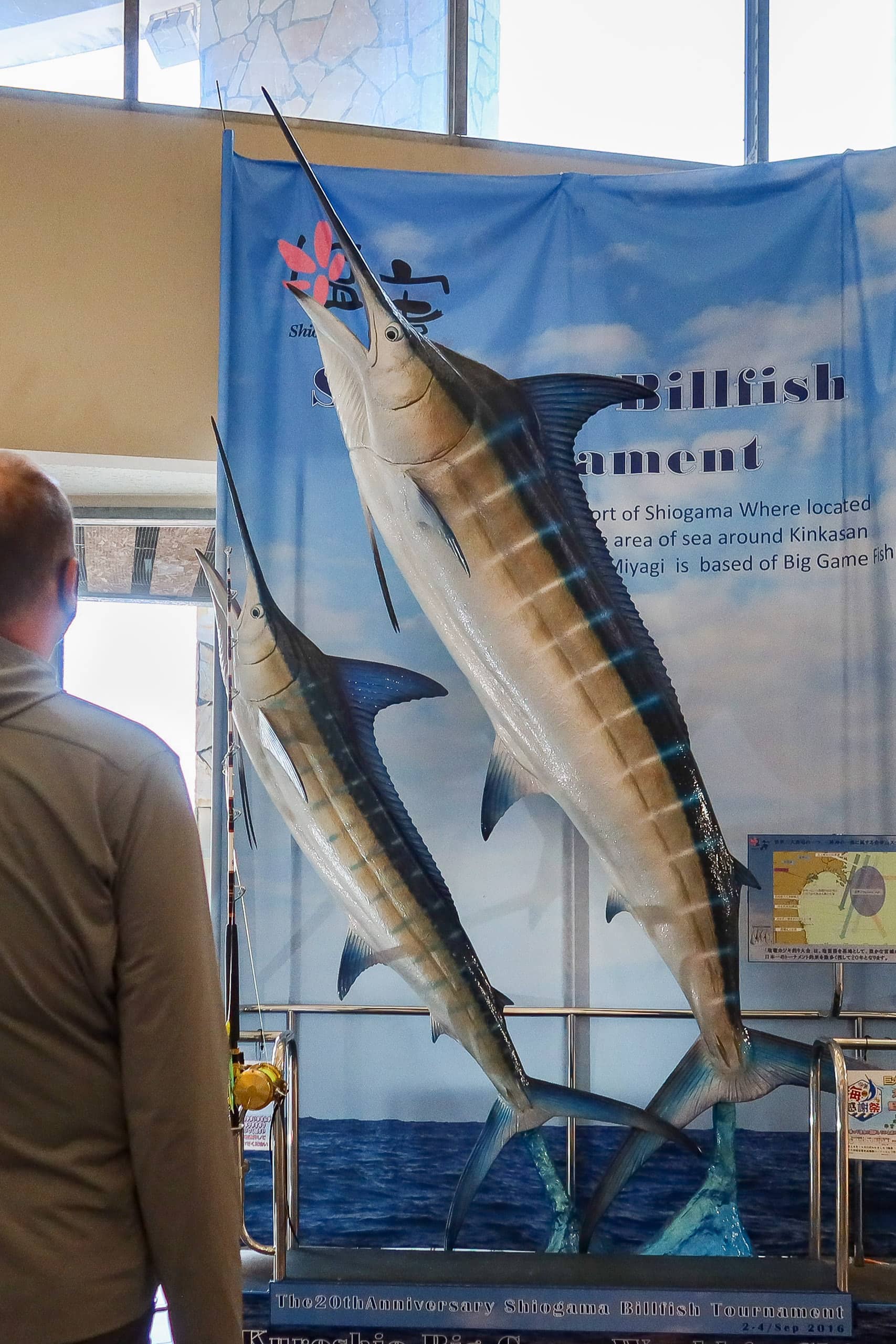

On the way back to our hotel, there was a small shopping mall, and we had dinner at Saizeriya, a casual pasta & pizza restaurant. We found a convenience store and a drugstore nearby, too, so we stocked up lightweight foods for our breakfast and lunch tomorrow as we expected no restaurant or cafe open on the islands.
Although our hotel looked old from the outside, our room was recently renovated and comfortable. When we stayed there, the hotel didn’t have washing machines, which was not a big issue for us as we had another set of clean clothes. However, shortly after that, they installed a new coin laundry, which is great news for future MCT hikers.
When we stayed there, they didn’t have coin laundry, but we didn’t really have to wash anything today.
It was a very enjoyable day, and we walked so comfortably all the time. In fact, even with the last brutally steep stairs, my feet didn’t hurt today.


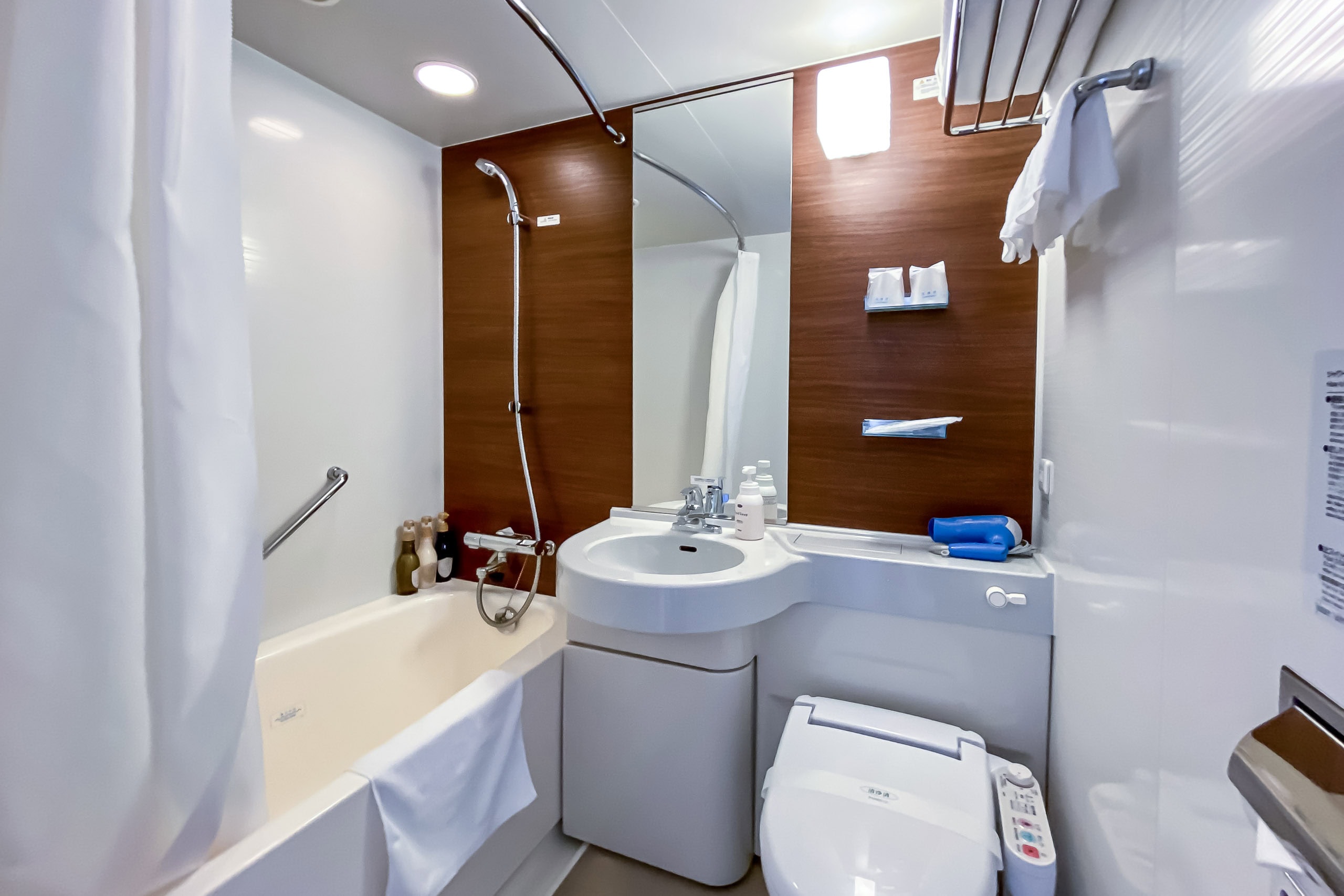
MCT – Day 6
| Start | Sendai Port |
| Distance | 13.8km |
| Elevation Gain/Loss | 141m/139m |
| Finish | Marin Gate Shiogama |
| Time | 5h 18m |
| Highest/Lowest Altitude | 57m/ 2m |
Route Data
The Michinoku Coastal Trail Thru-hike : Late March – Mid-May 2021
- The first and most reliable information source about MCT is the official website
- For updates on detours, route changes, and trail closures on the MCT route
- Get the MCT Official Hiking Map Books
- Download the route GPS data provided by MCT Trail Club
- MCT hiking challengers/alumni registration




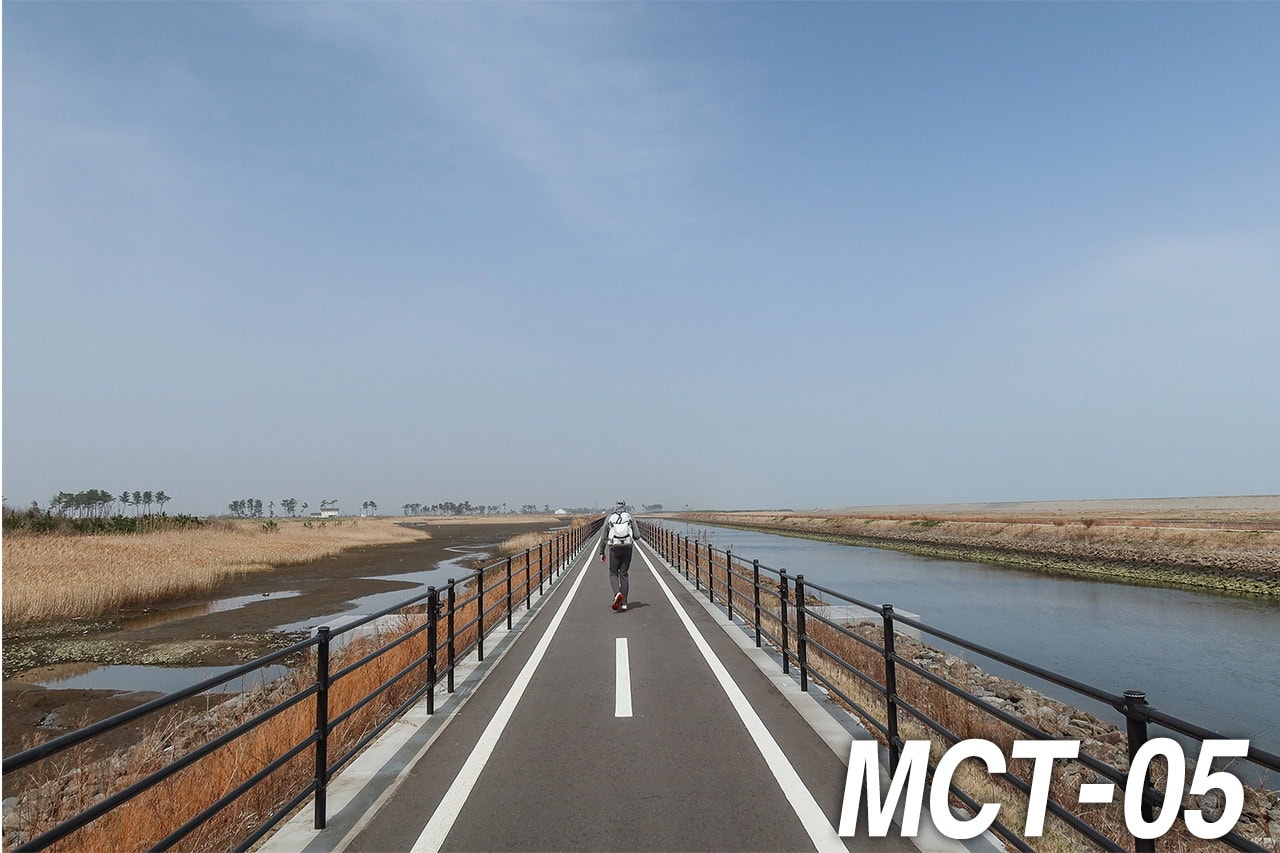
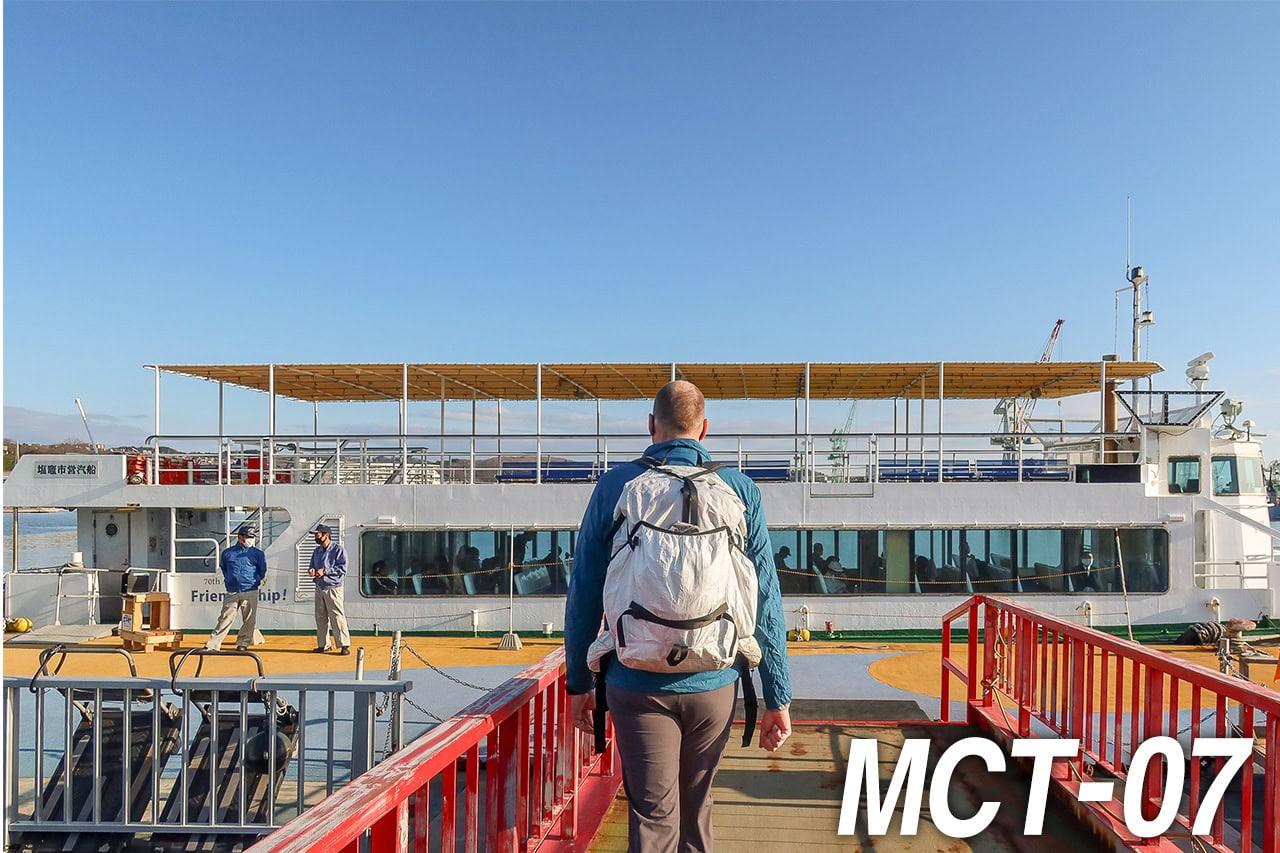
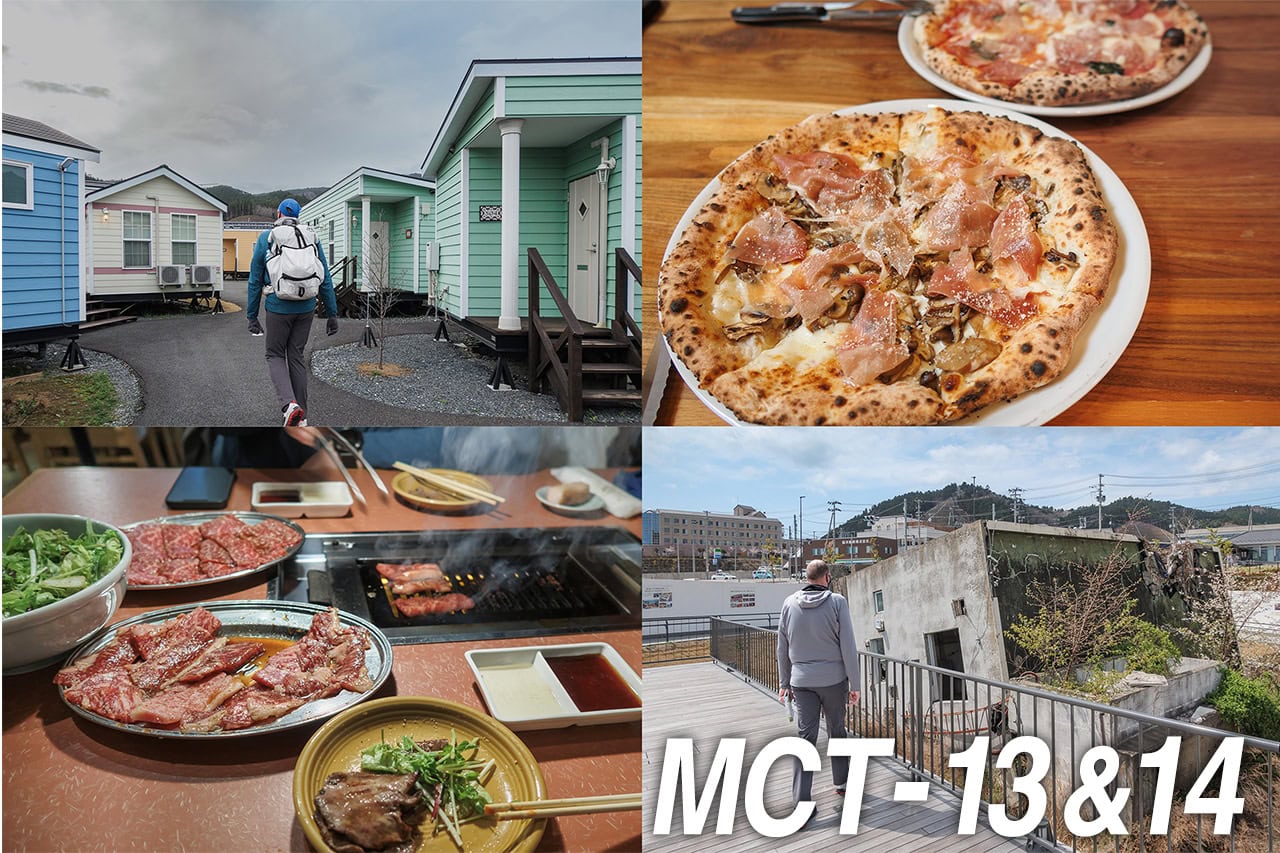
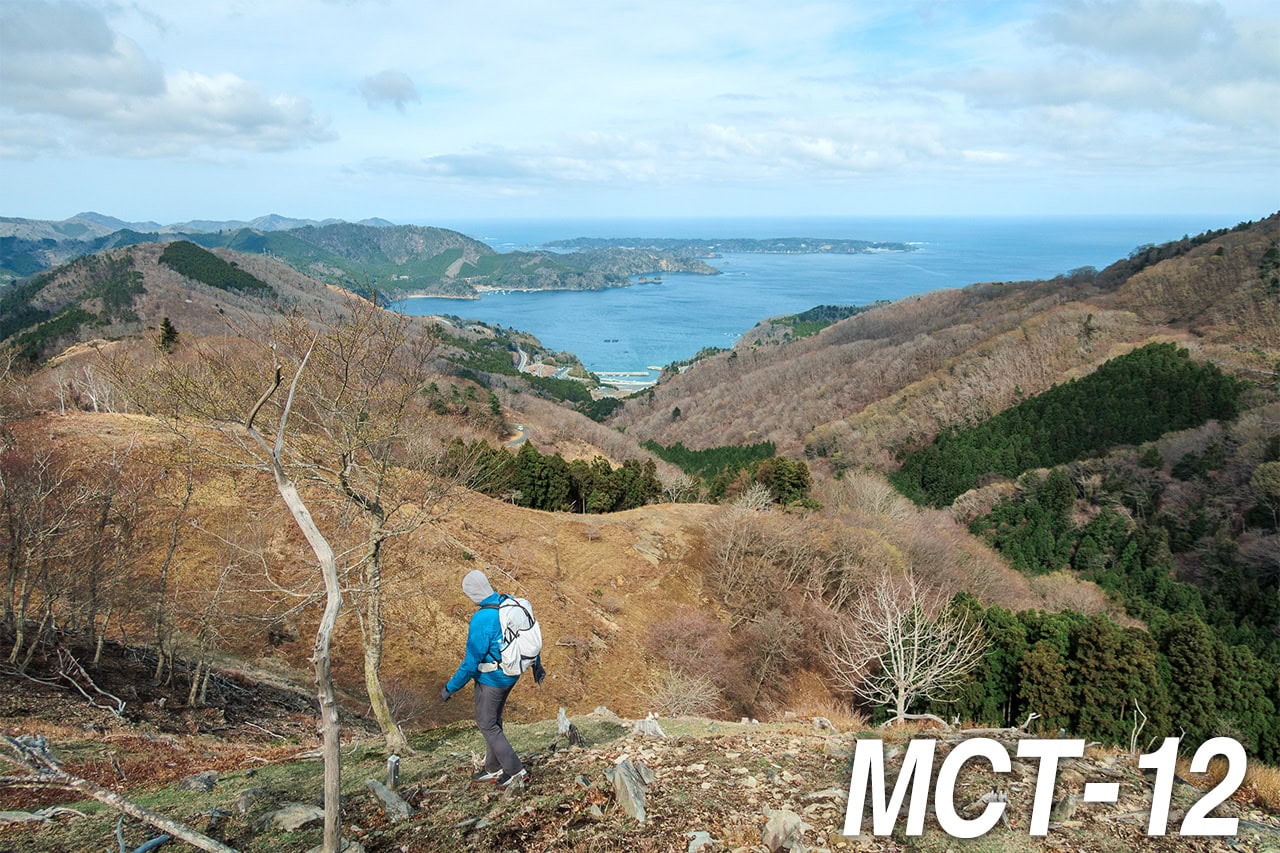
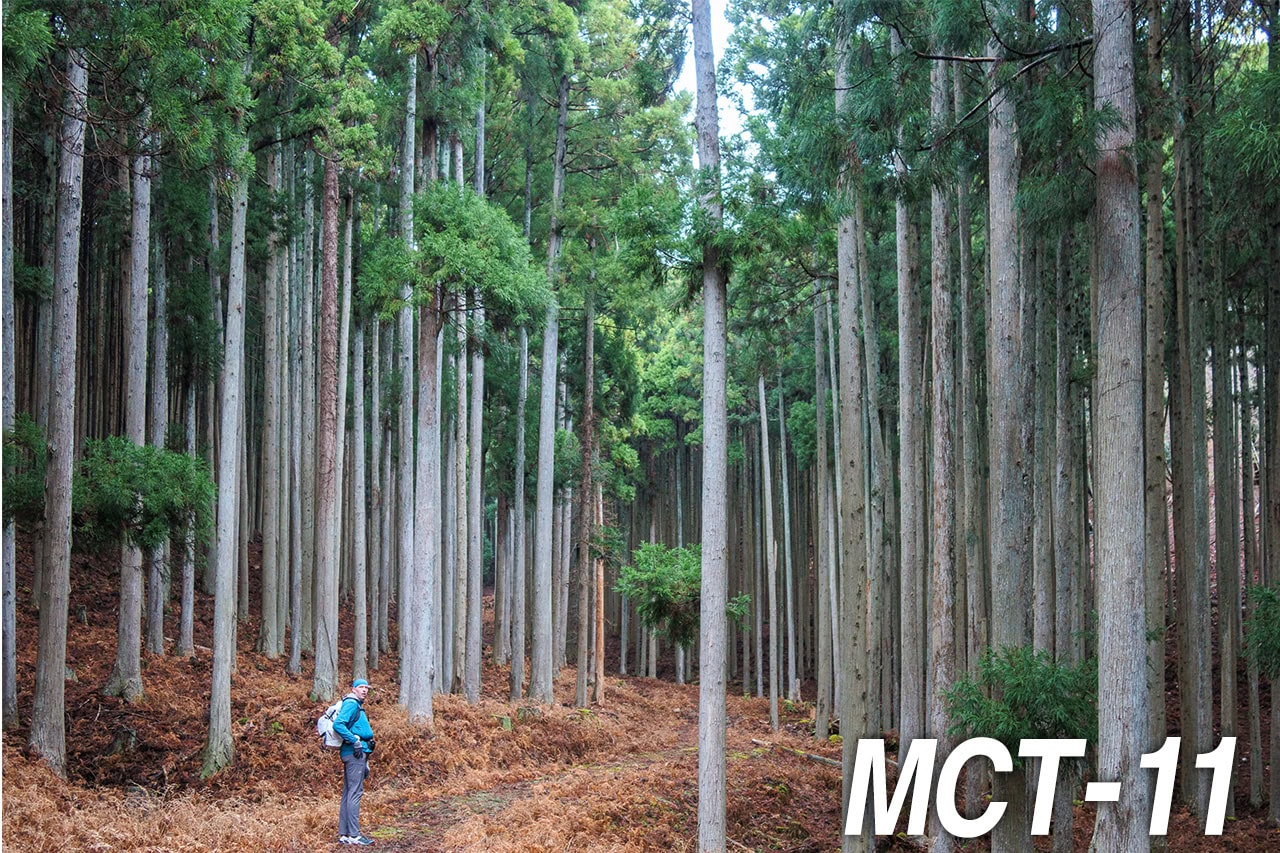
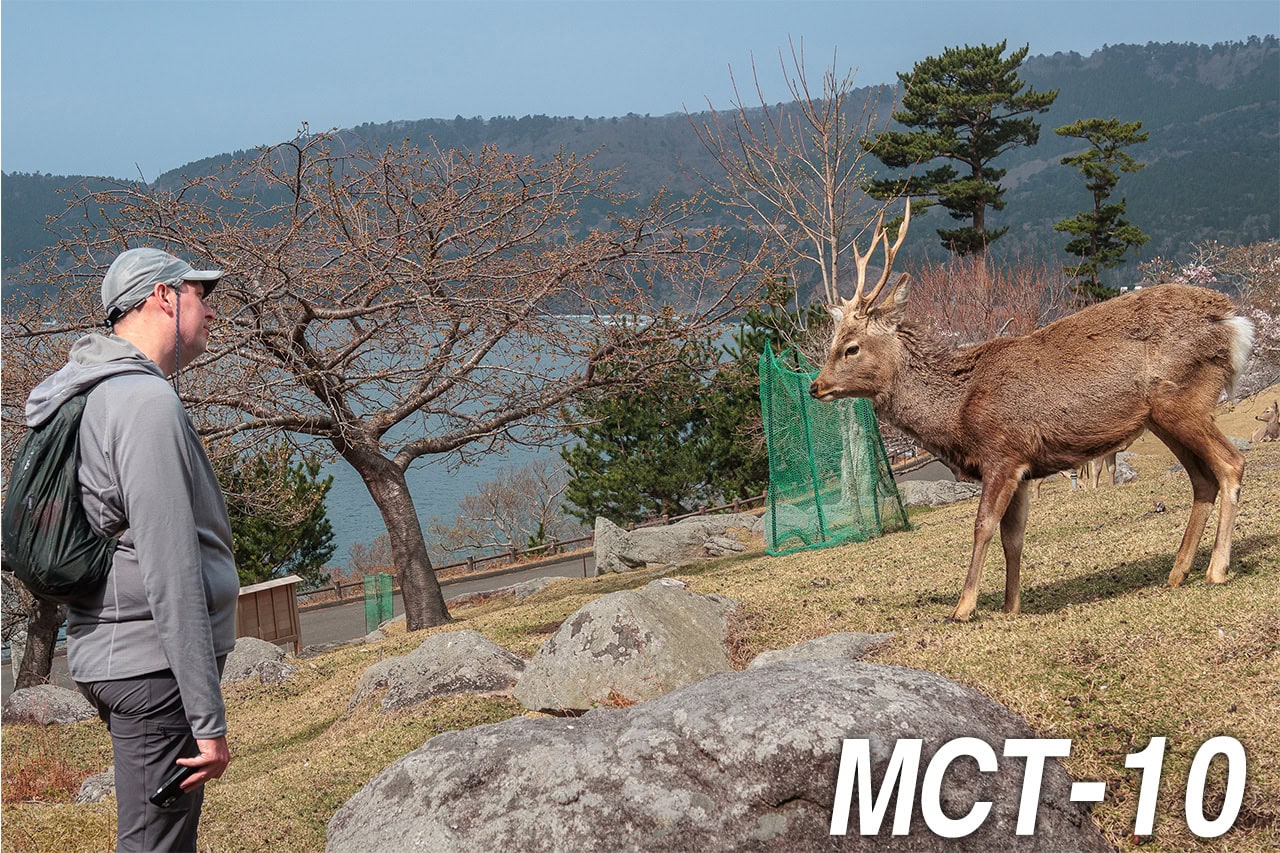
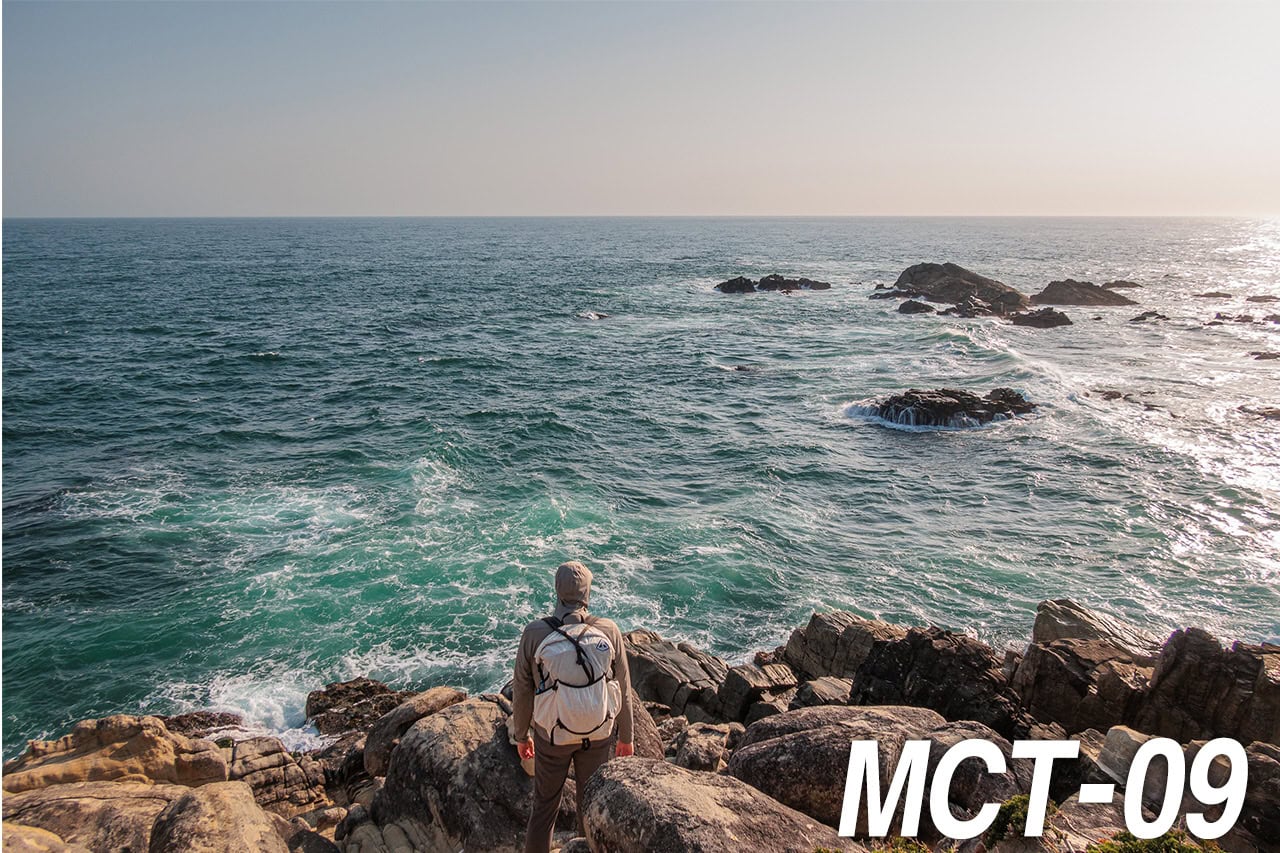
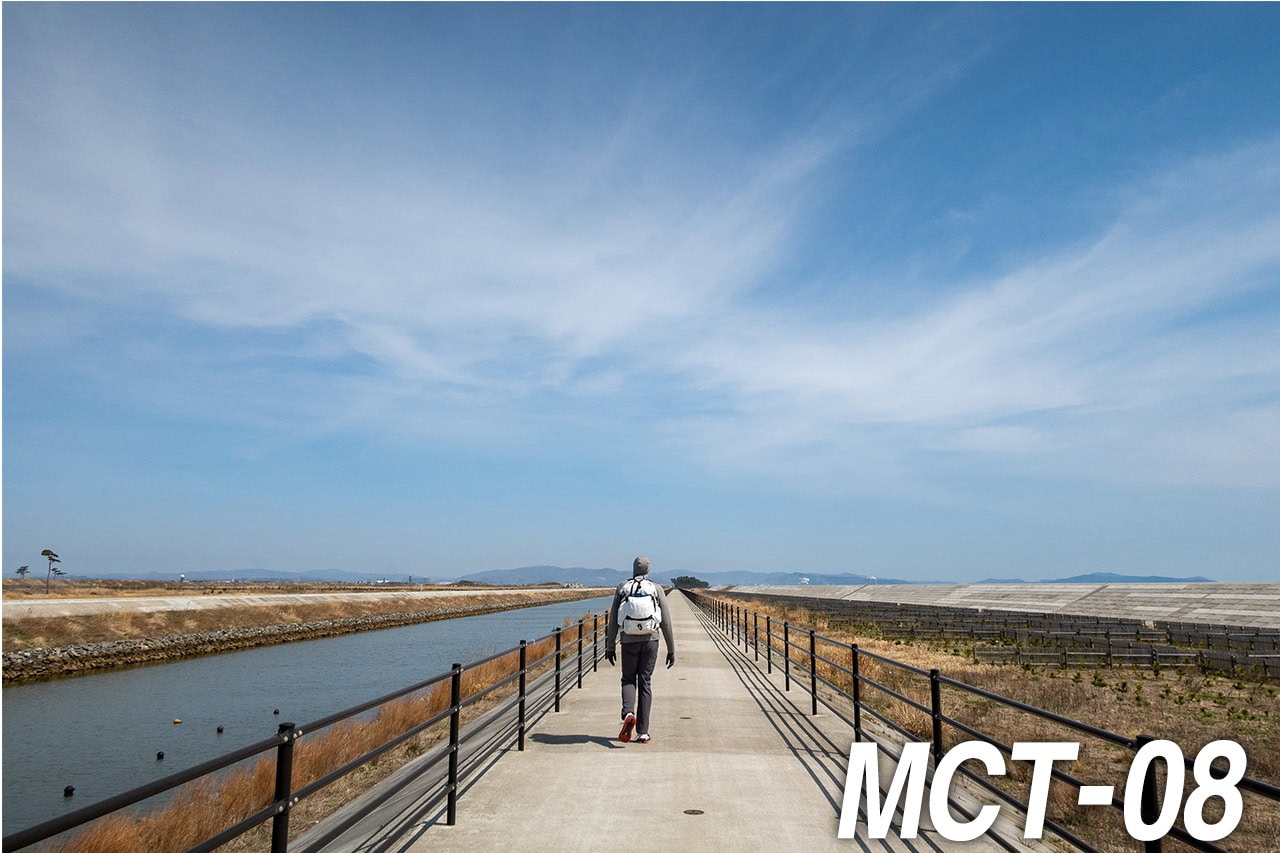
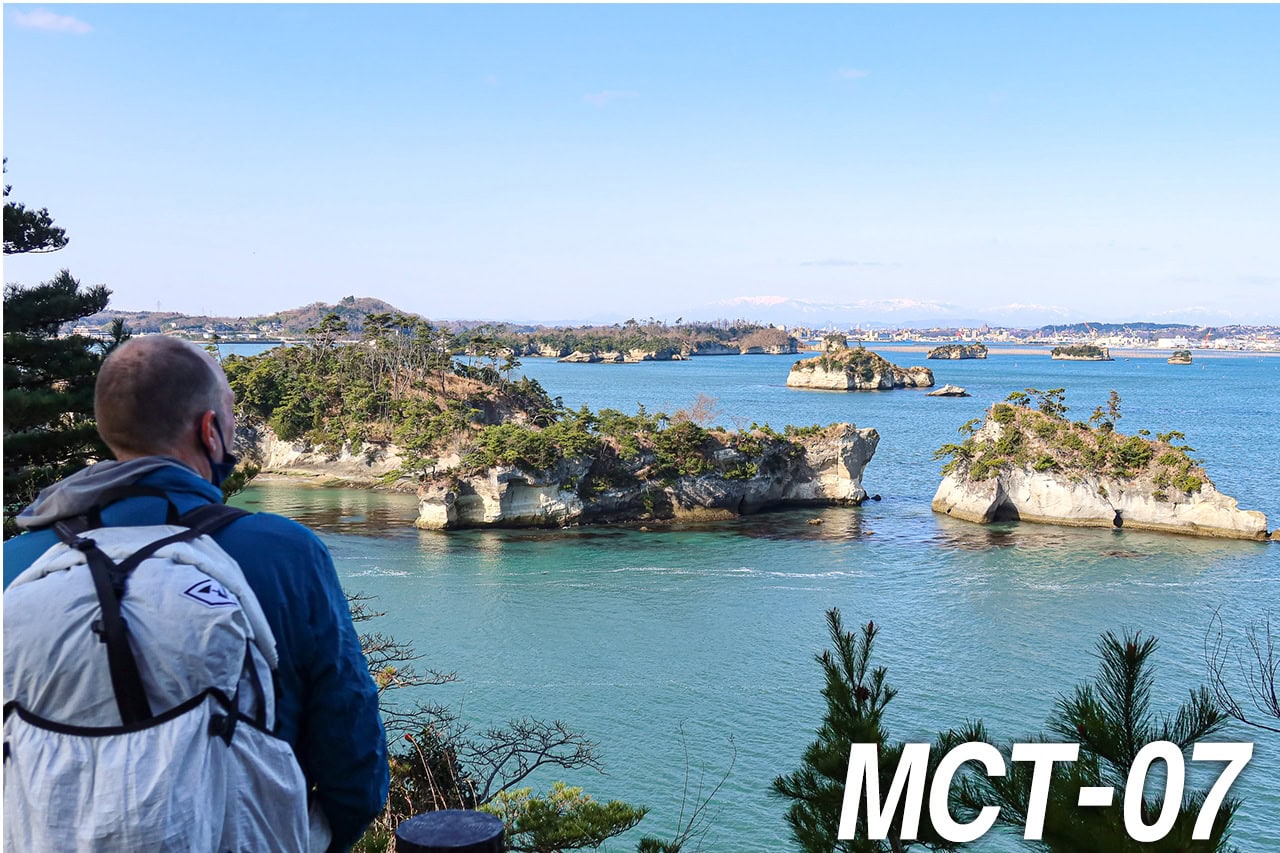
Comments